In the evening after our visit to Abyaneh, we caught a bus to the next city on our itinerary, the city of Esfahan. Esfahan is located on the old silk trading route and was once one of the largest and most important cities in the world. The city flourished under the Safavid dynasty in the 16th and 17th centuries, when it was the capital of Persia.
Today, Esfahan is the third largest city in Iran with a population of 2,4 million. Esfahan is Iran’s number one tourist destination, famous for its Persian-Islamic architecture, including the Naghsh-e Jahan Square, which is one of the largest squares in the world and has, among other sites in Esfahan, been designated by UNESCO as a World Heritage Site.
At 5 PM, we arrived in Esfahan and caught a taxi to the Amir Kabir Hostel, where we stayed for the night. I was really surprised by the size and the look of the Esfahan, as it was much more city-like than I had expected. I had thought it would be similar to ancient Kashan, which I loved, but unfortunately, it reminded me quite a bit of Tehran with its crazy traffic. I hoped that seeing some of the famous sights of the city would change my slightly negative first impression. We had a long list of interesting places to see for the next day, so after researching on the fastest internet that we’ve had so far in Iran (it was such a welcome change!), we went to bed and slept until 8 AM the next morning.
Naghsh-e Jahan Square
We spent the entire day sightseeing, starting at the Naghsh-e Jahan Square from 1602, which is the largest historical public square in the world after Tiananmen Square in Beijing. The square is surrounded by beautiful buildings with handpainted tiling from the Safavid era (16th-18th century), including the magnificent Imam Mosque with seven-colour mosaic tiles and calligraphic inscriptions; the Sheikh Lotf Allah Mosque, which is considered the most beautiful mosque in Iran; and the Ali Qapu Palace, which is a royal palace from early 17th century.
The square was interesting, but we decided not to go into any of the mosques, as the entrance prices are quite expensive, and we had heard that it was easy to spend 20 USD on just entrance fees in Esfahan, which neither of us were interested in doing. The mosques were both beautiful, but in my opinion, there are more beautiful mosques to be found elsewhere in Iran and the world, at least from the outside.
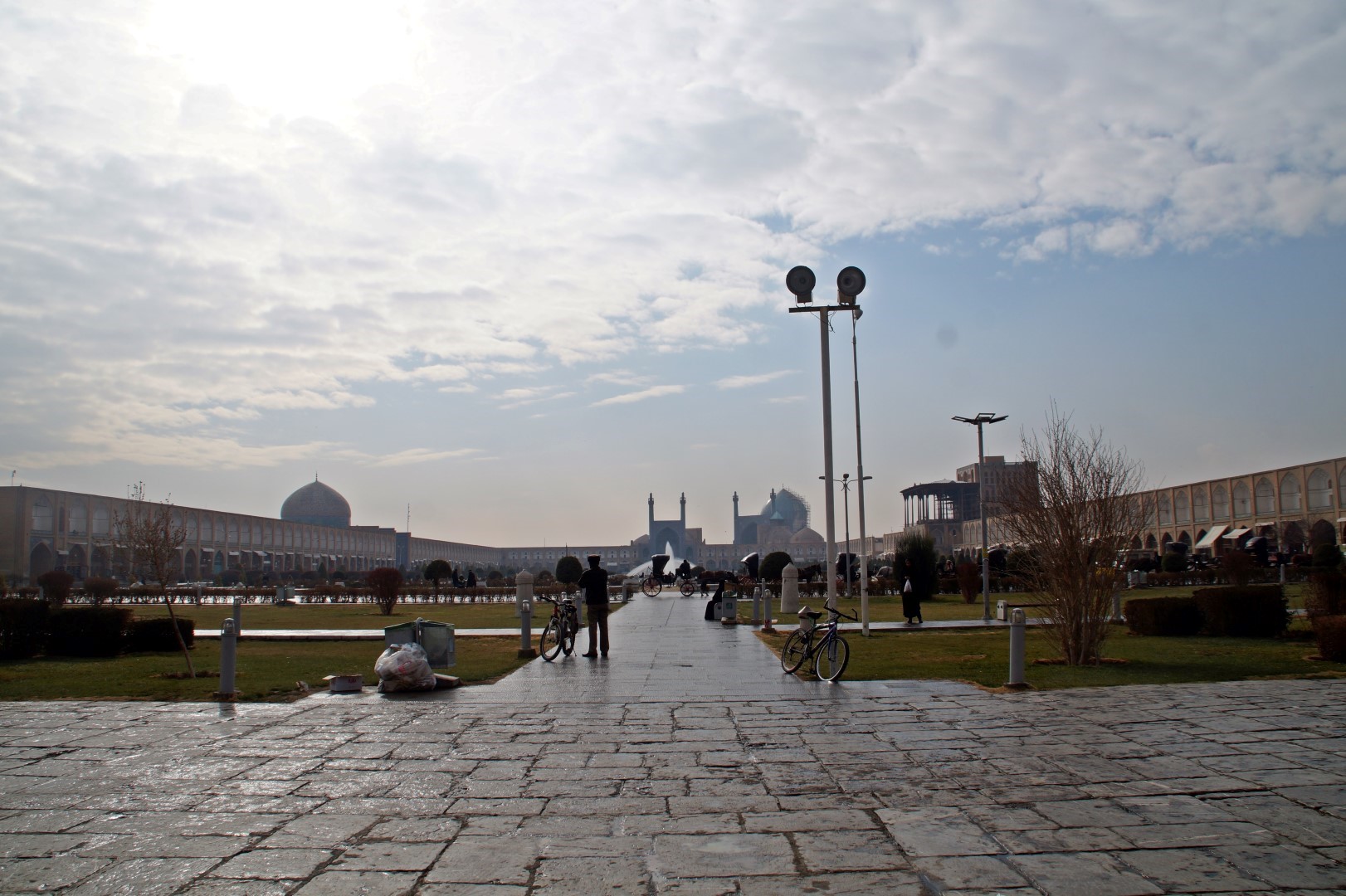
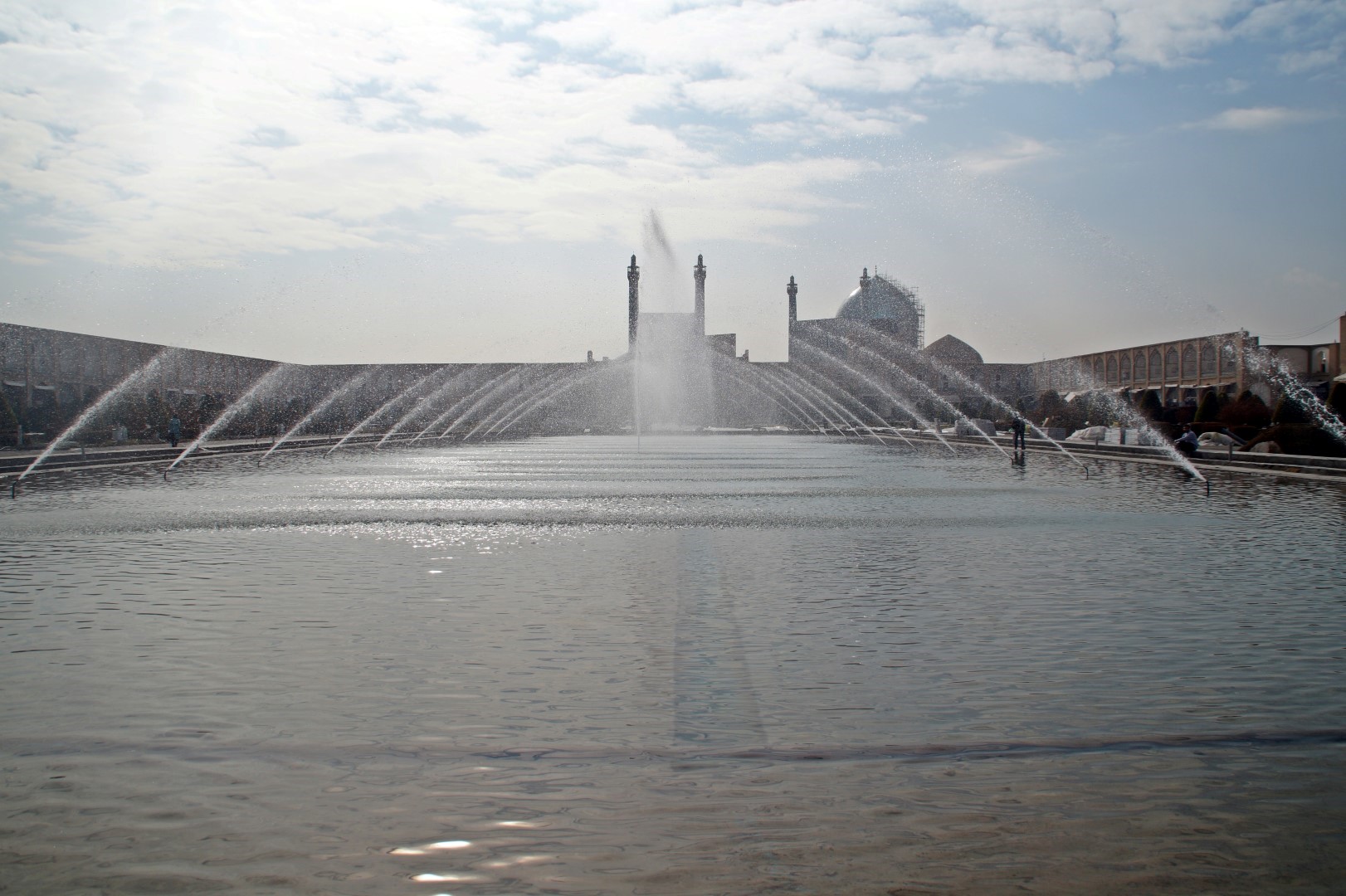
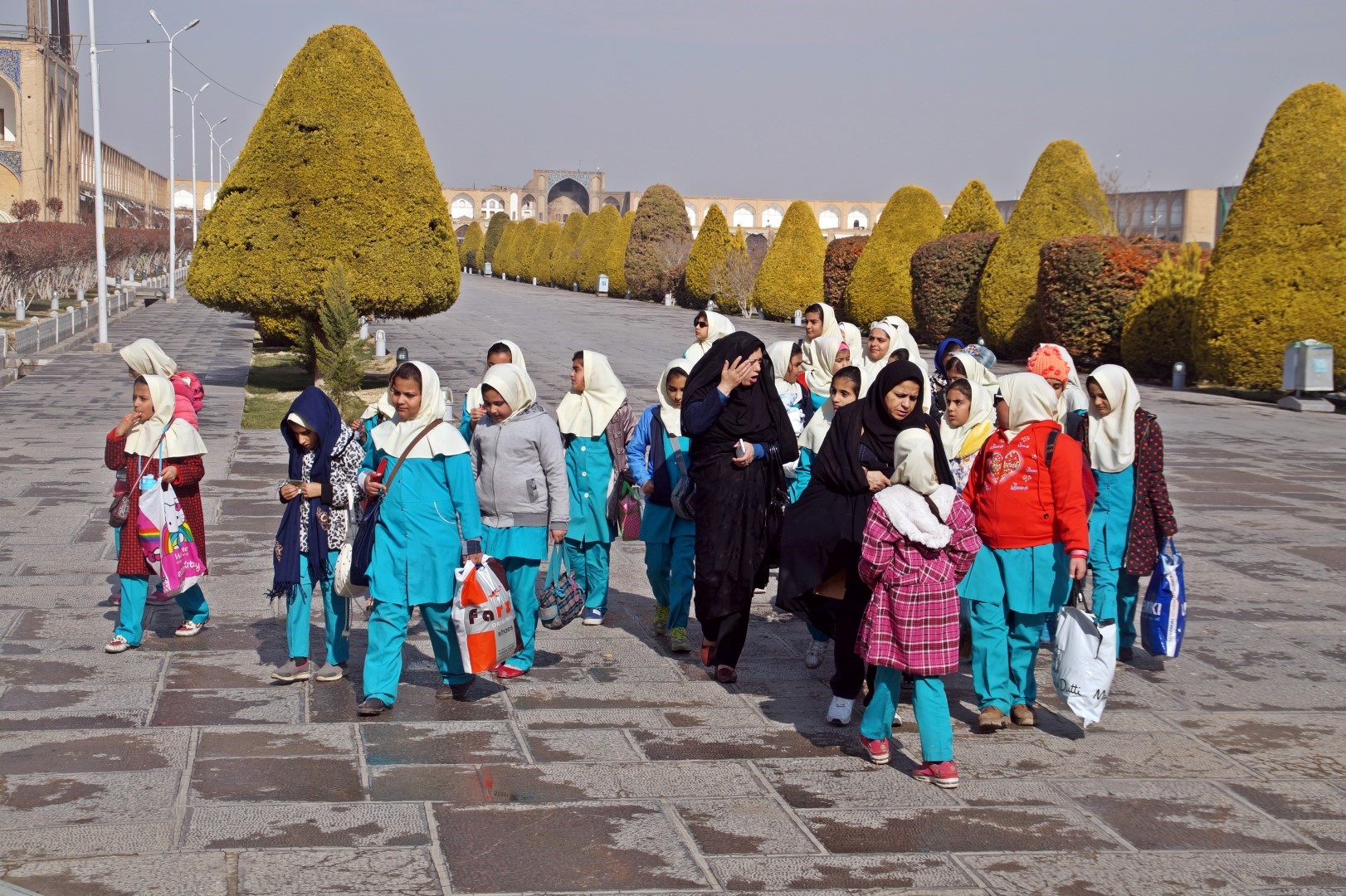
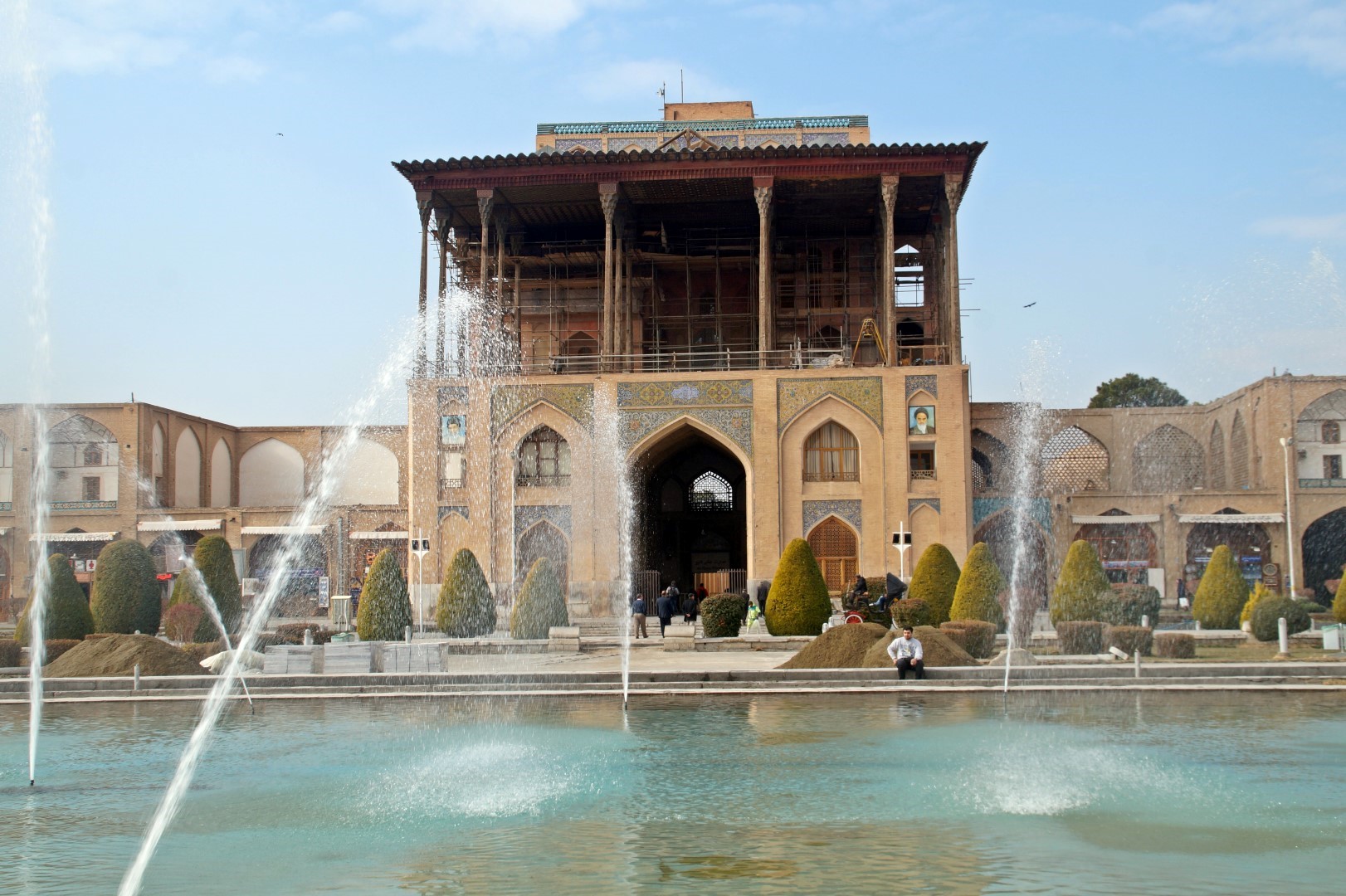
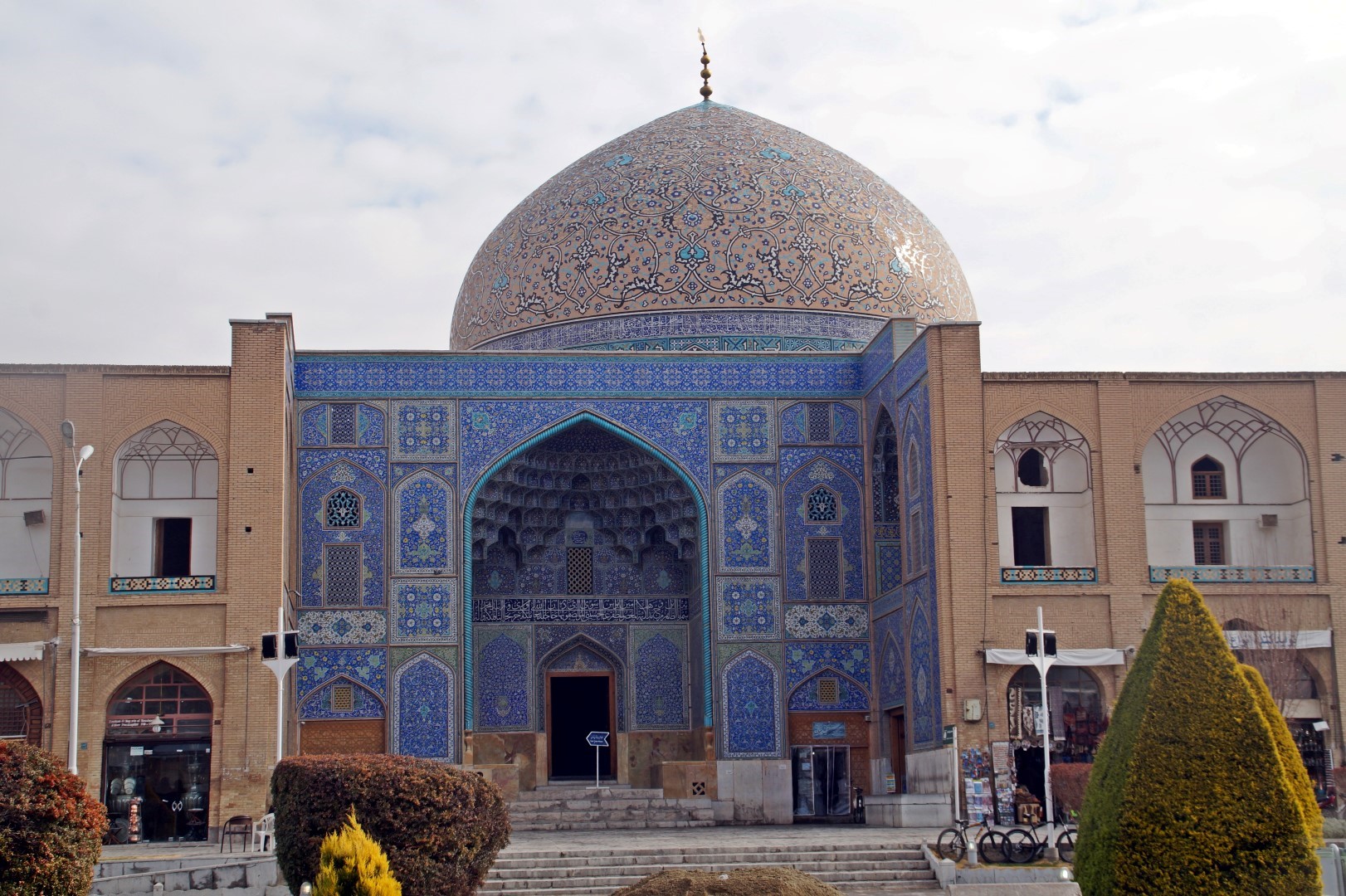
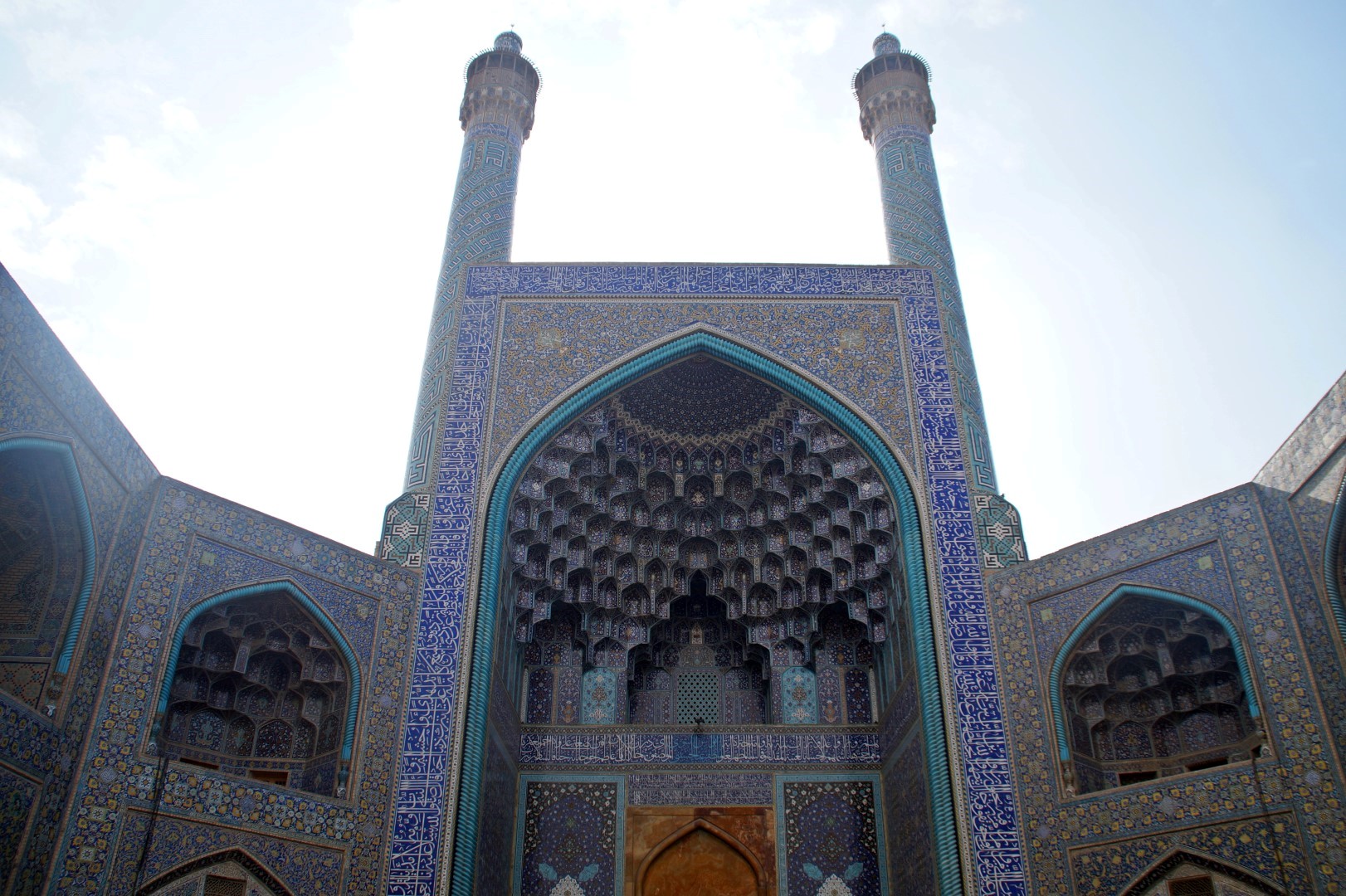
The bazaar and Hakim Mosque
Close to the square, beyond the connected bazaar which offers many interesting local delicacies and handcrafts, lies the Hakim Mosque. Hakim Mosque is one of the oldest mosques in Esfahan, built between 1656 and 1662 and located on the site of a 10th century mosque.
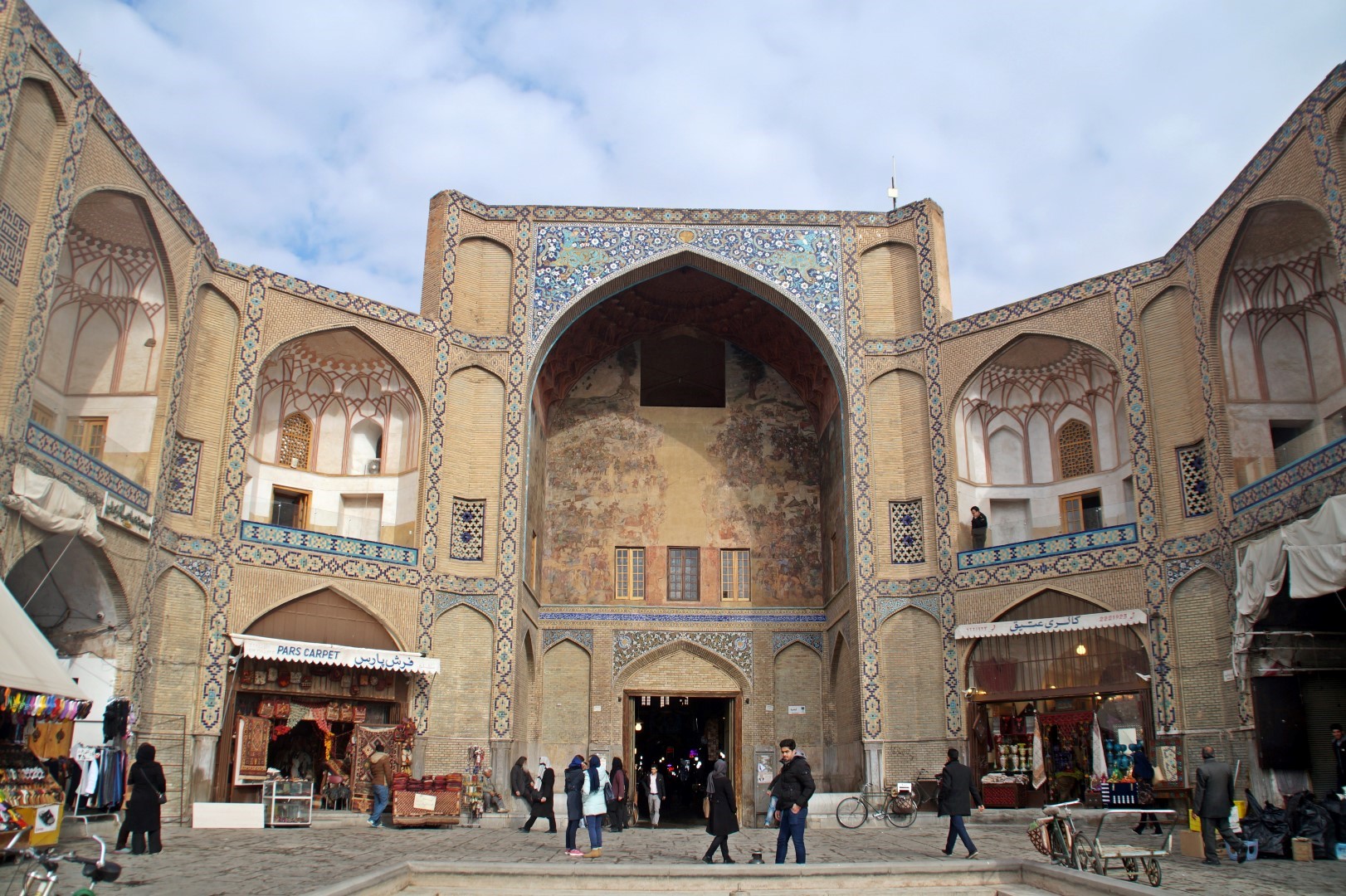
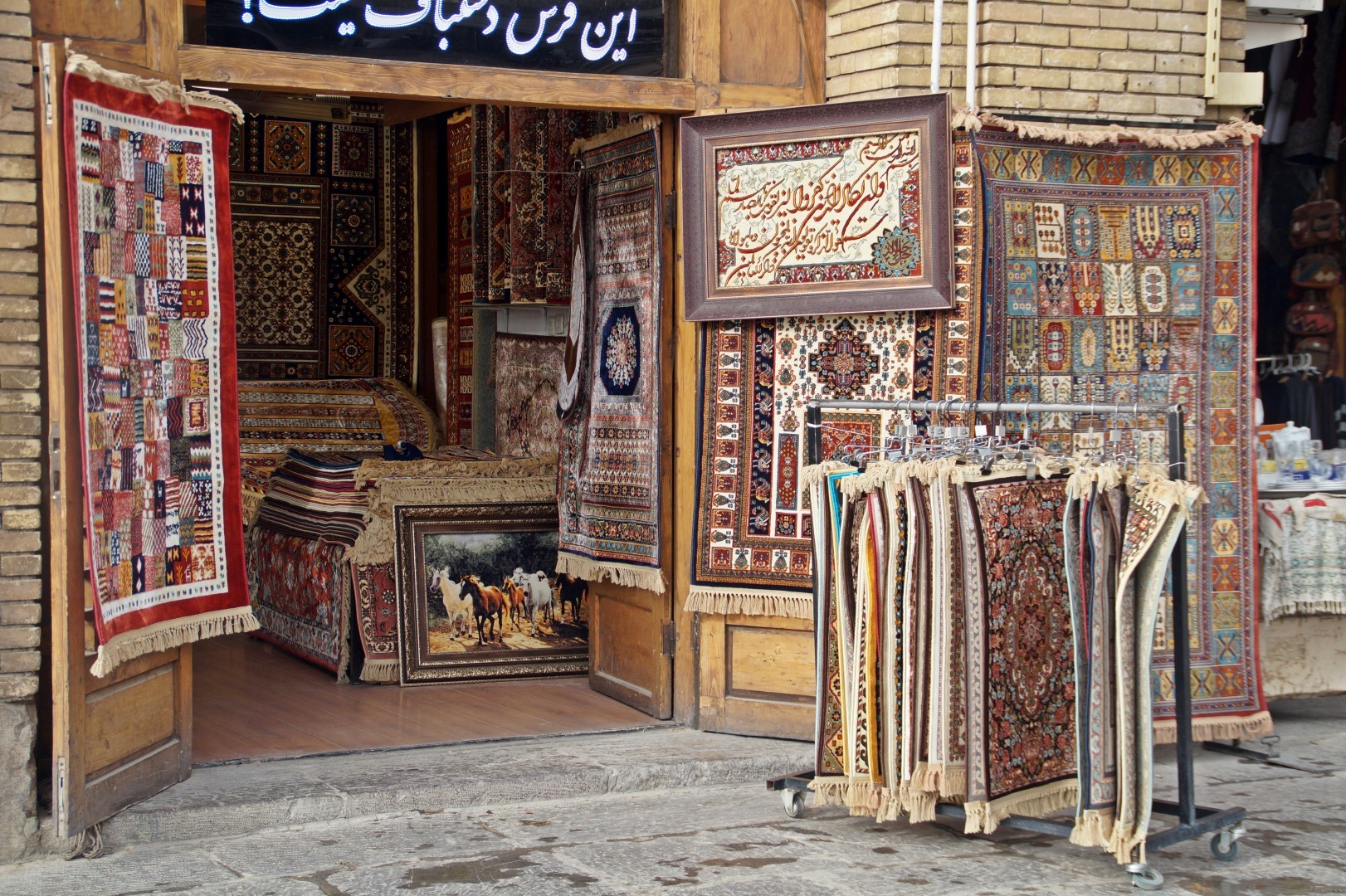
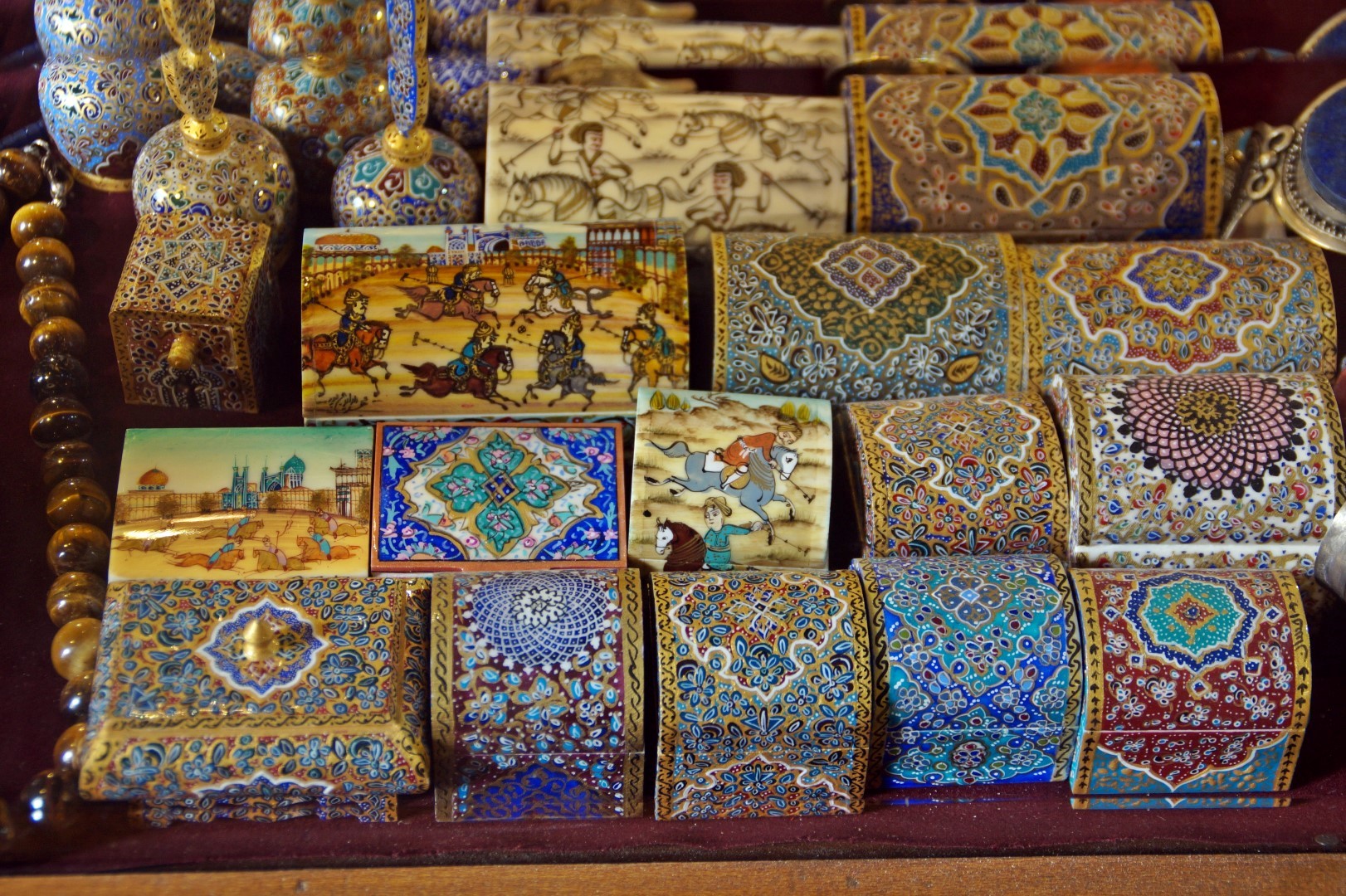
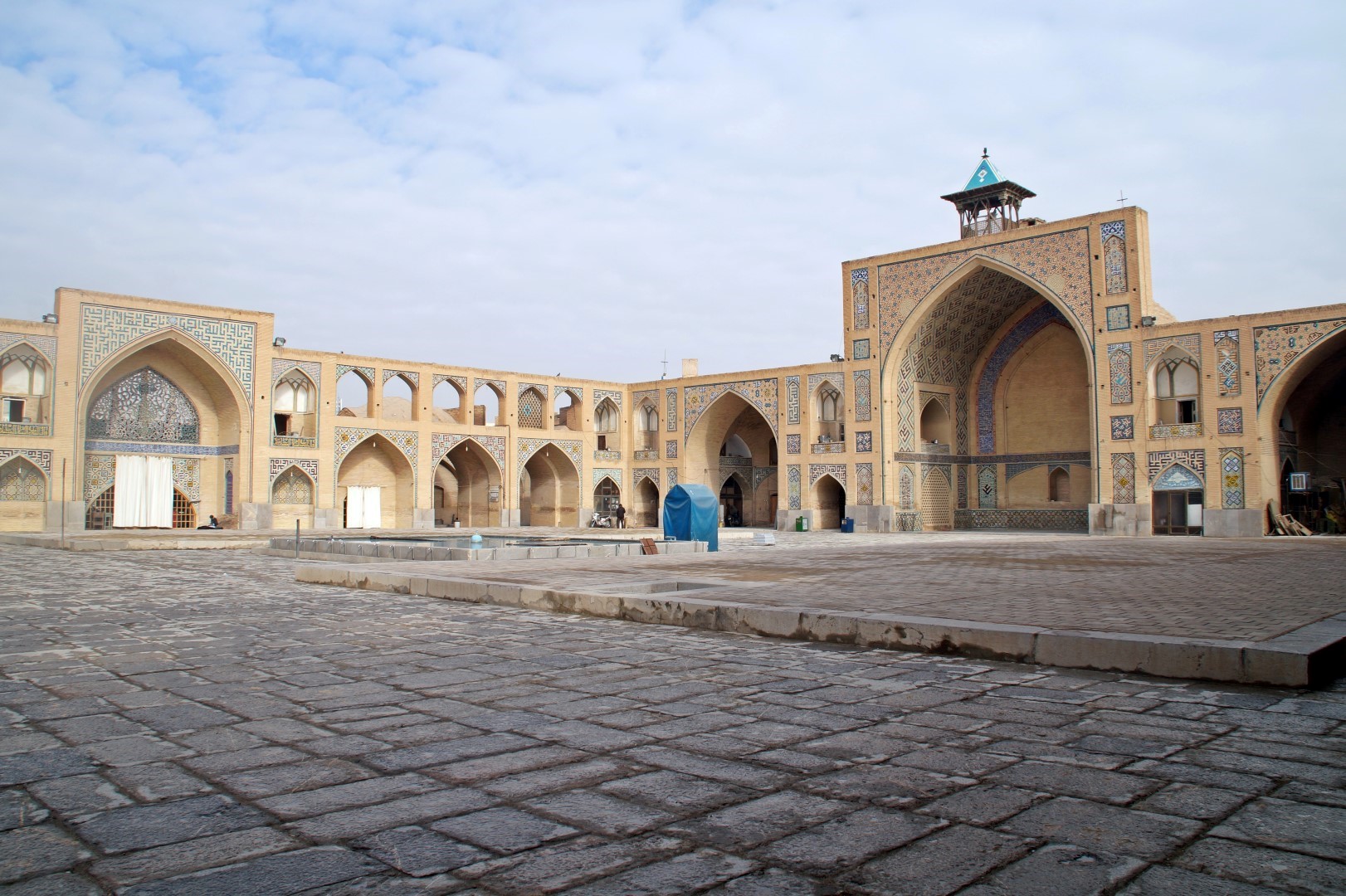
Si-o-She Pol Bridge
Next up on our itinerary was Jolfa, the Armenian Quarter, where three beautiful churches are situated. To get to the quarter, we had to walk across the Zayanderud River, but when we got to the Si-o-She Pol Bridge, built in 1602 and considered to be one of the most beautiful examples of Safavid era bridge design, we were shocked to see that the river was completely dried out, which apparently is a result of a drought and a poorly planned dam. It kind of didn’t help the image of Esfahan that I had gotten so far.
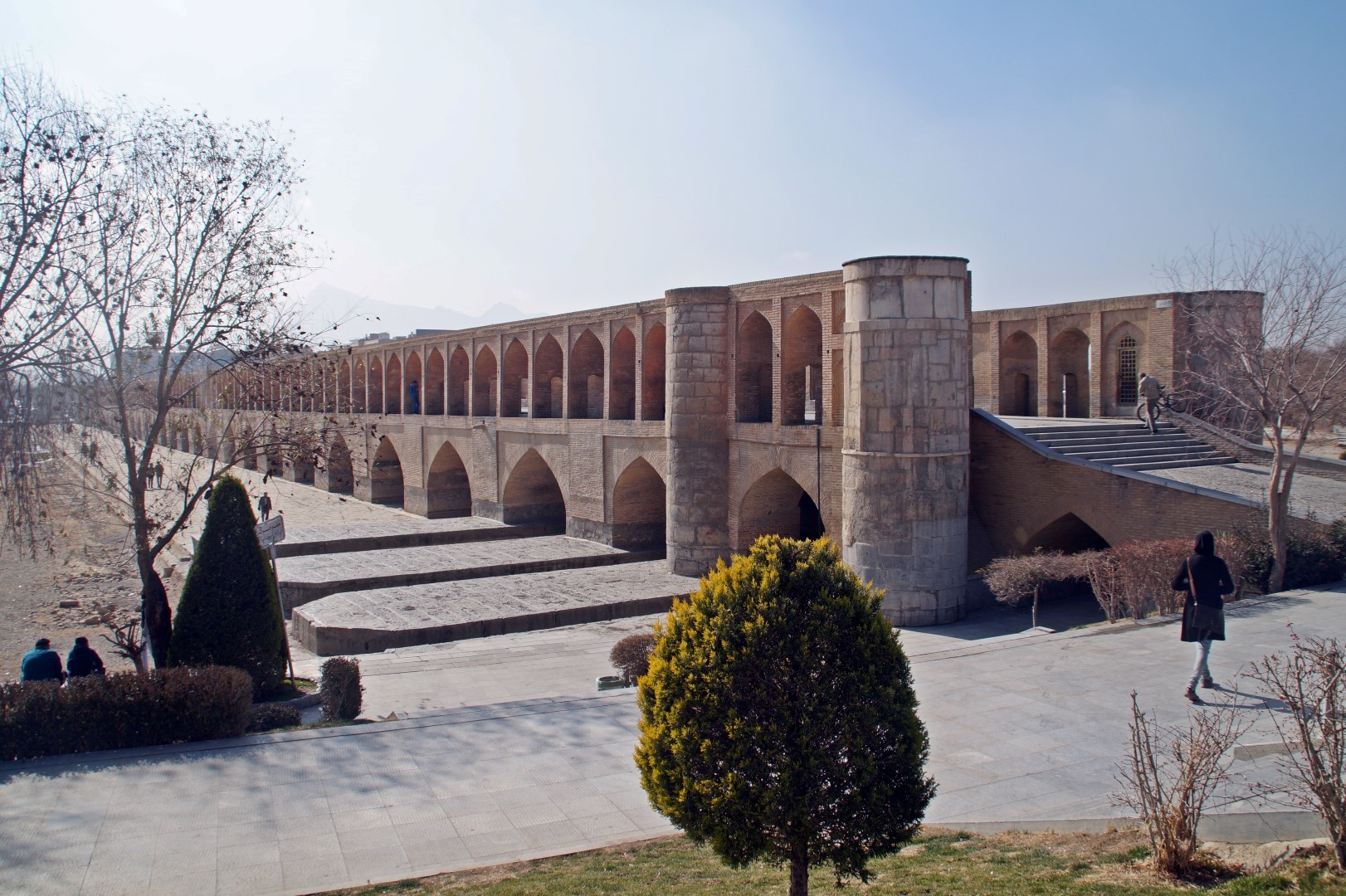
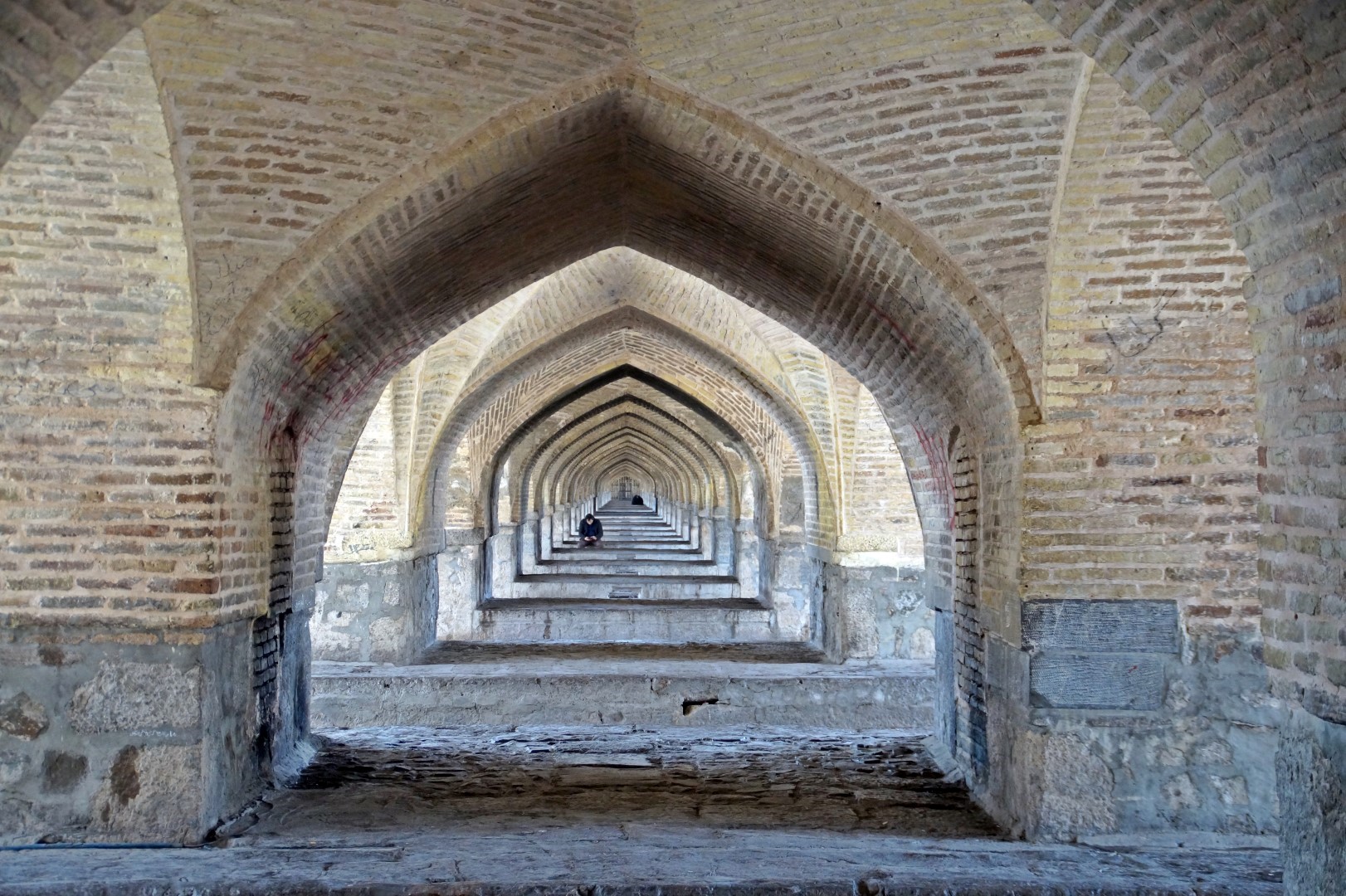
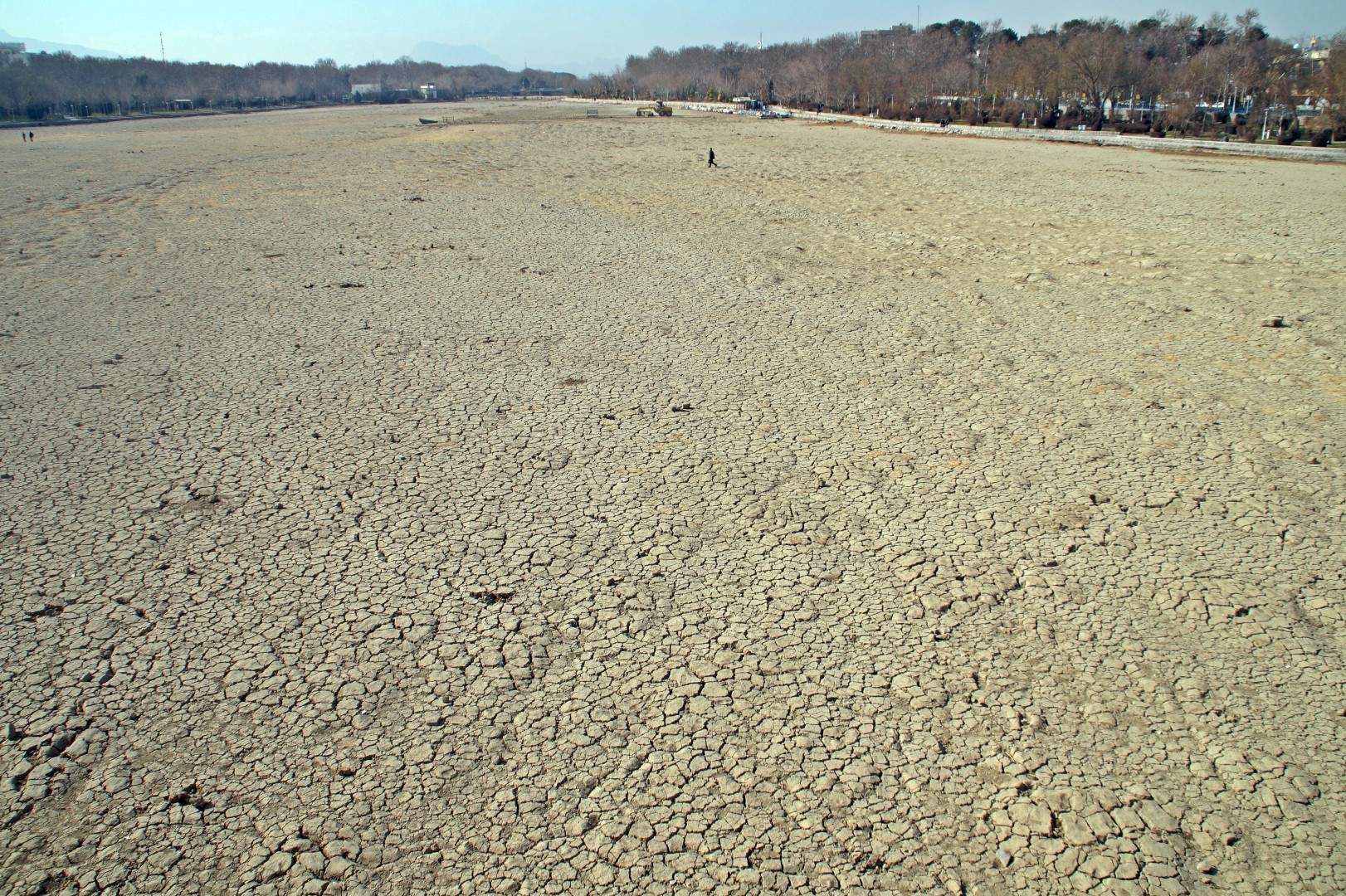
The Armenian Quarter
The Armenian Quarter seems like a completely different city; the area is much nicer and quieter than the rest of busy Esfahan. We saw the three churches in the area, including the Vank Cathedral, which was built in the 17th century. Steve decided to pay the entrance fee of 200,000 rial (6 USD) and go inside, while broke Melissa waited outside and had some interesting talks with locals who would constantly come up to me to start a conversation.
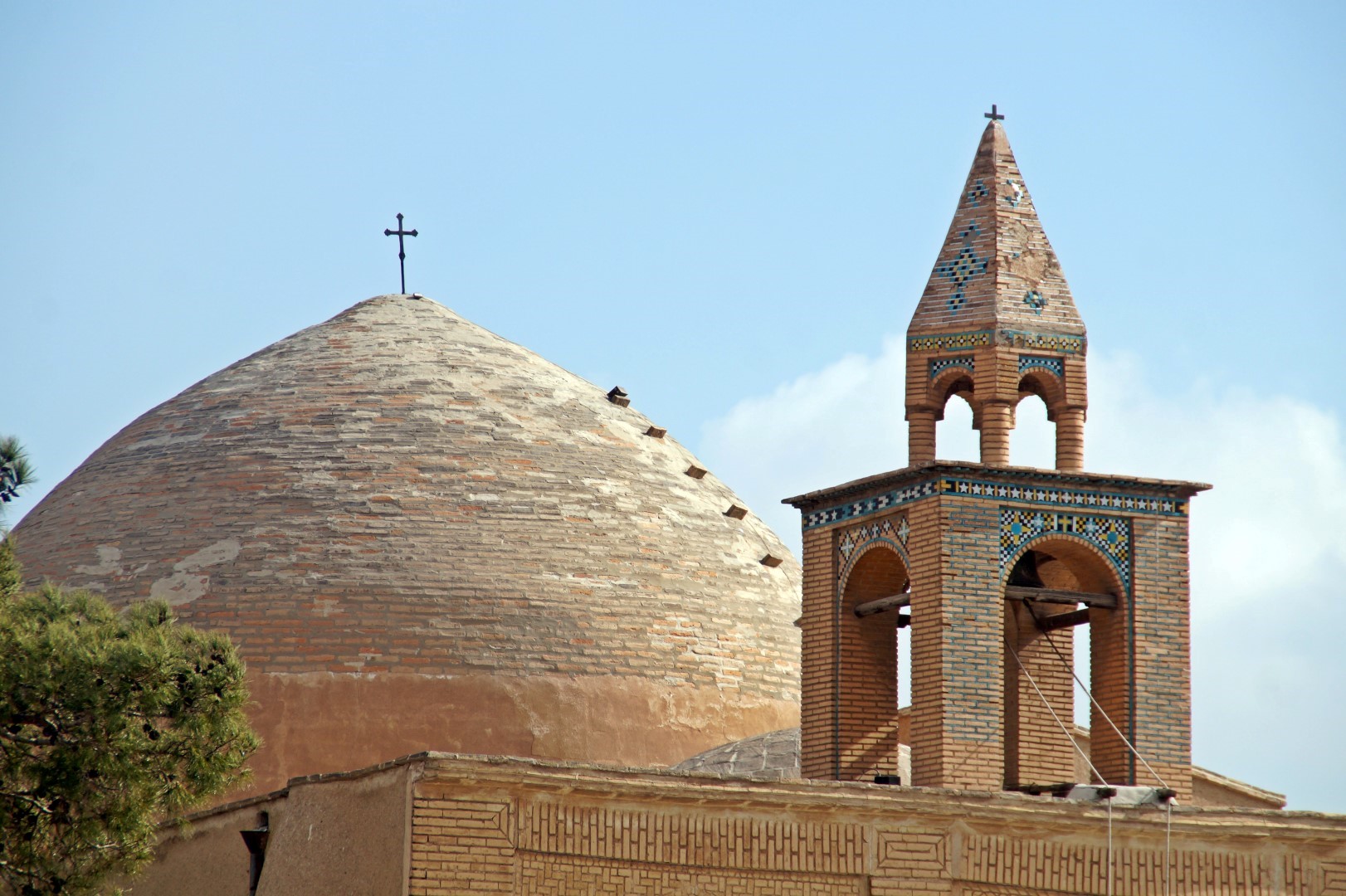
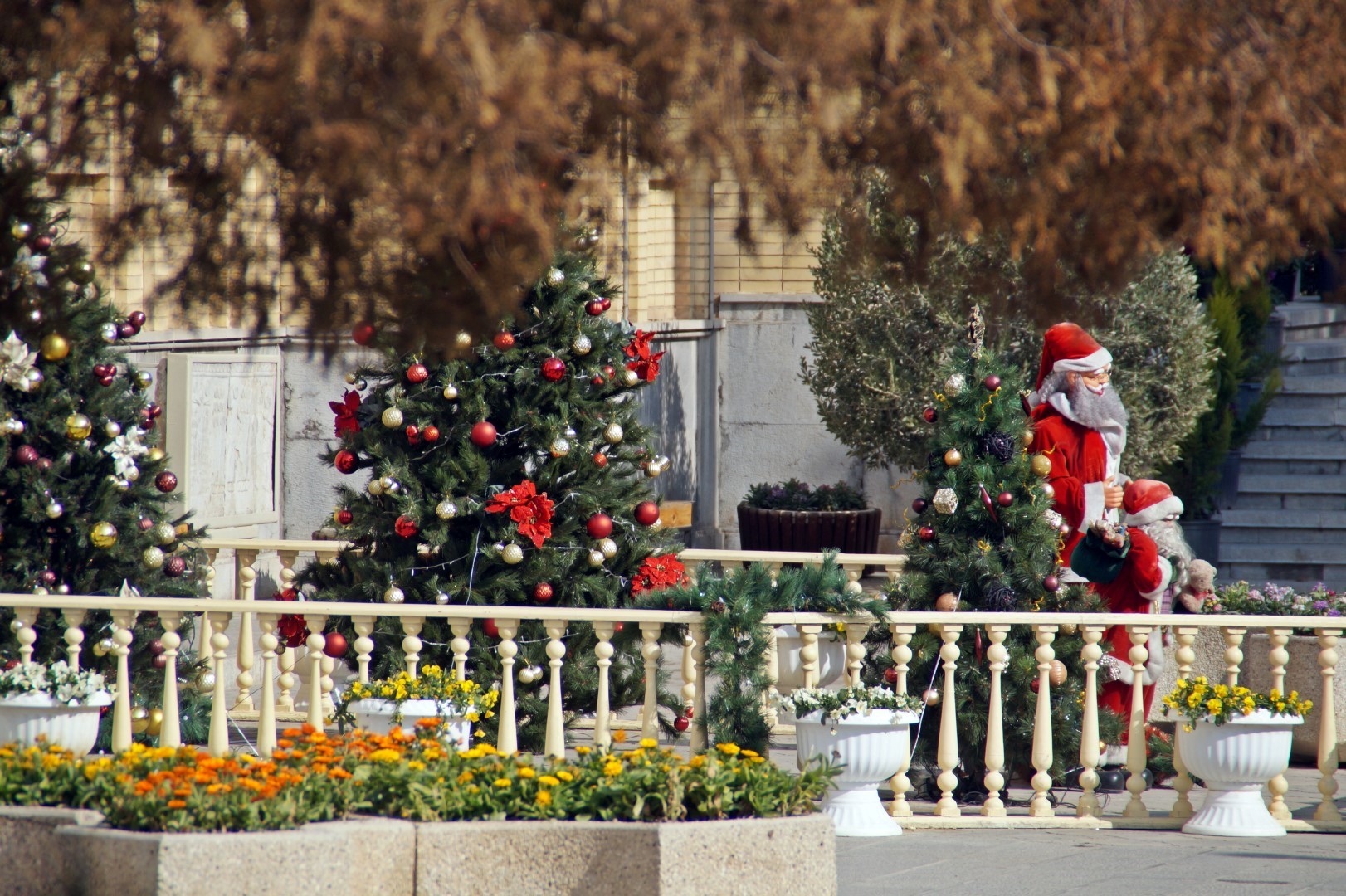
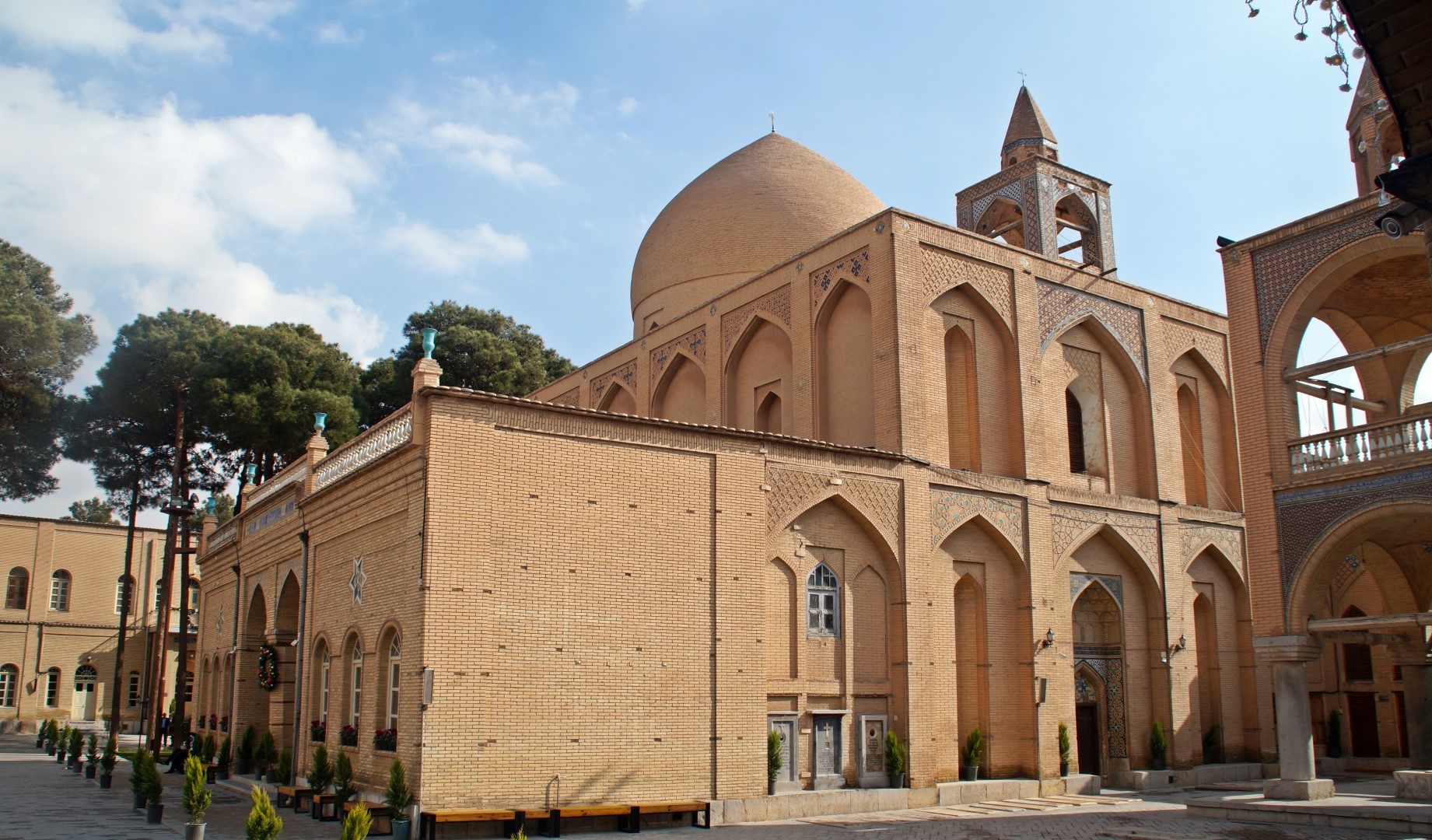
Masjed-e Jamé Mosque
Our last stop for the day was the Masjed-e Jamé Mosque, another World Heritage Site designated by UNESCO. The building of the mosque started in 842 AD and it’s the first Islamic building to adapt the four-courtyard layout of Sassanid-era palaces. Since it’s UNESCO, and I’m a bit of a UNESCO collector, we both decided to pay the entrance fee of 200,000 rial (6 USD) and explored the mosque from the inside. The mosque has an interesting history, but the entrance fee seemed ridiculous for what we actually got. I mean, it’s a nice mosque, but it’s not the most beautiful one in town. In fact, we were told several times that we should’ve gone inside the Sheikh Lotf Allah Mosque at the Naghsh-e Jahan Square instead. Maybe next time!
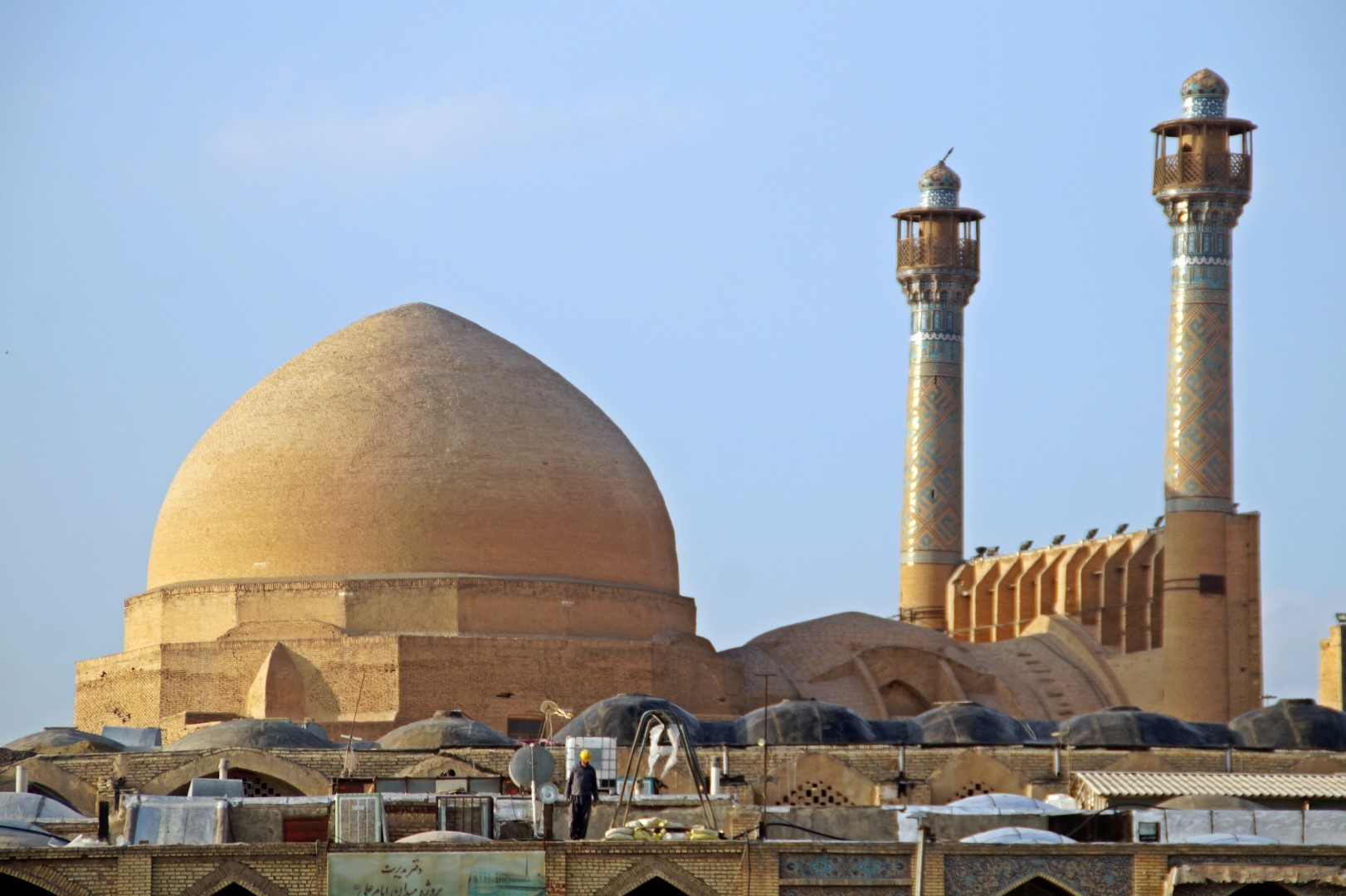
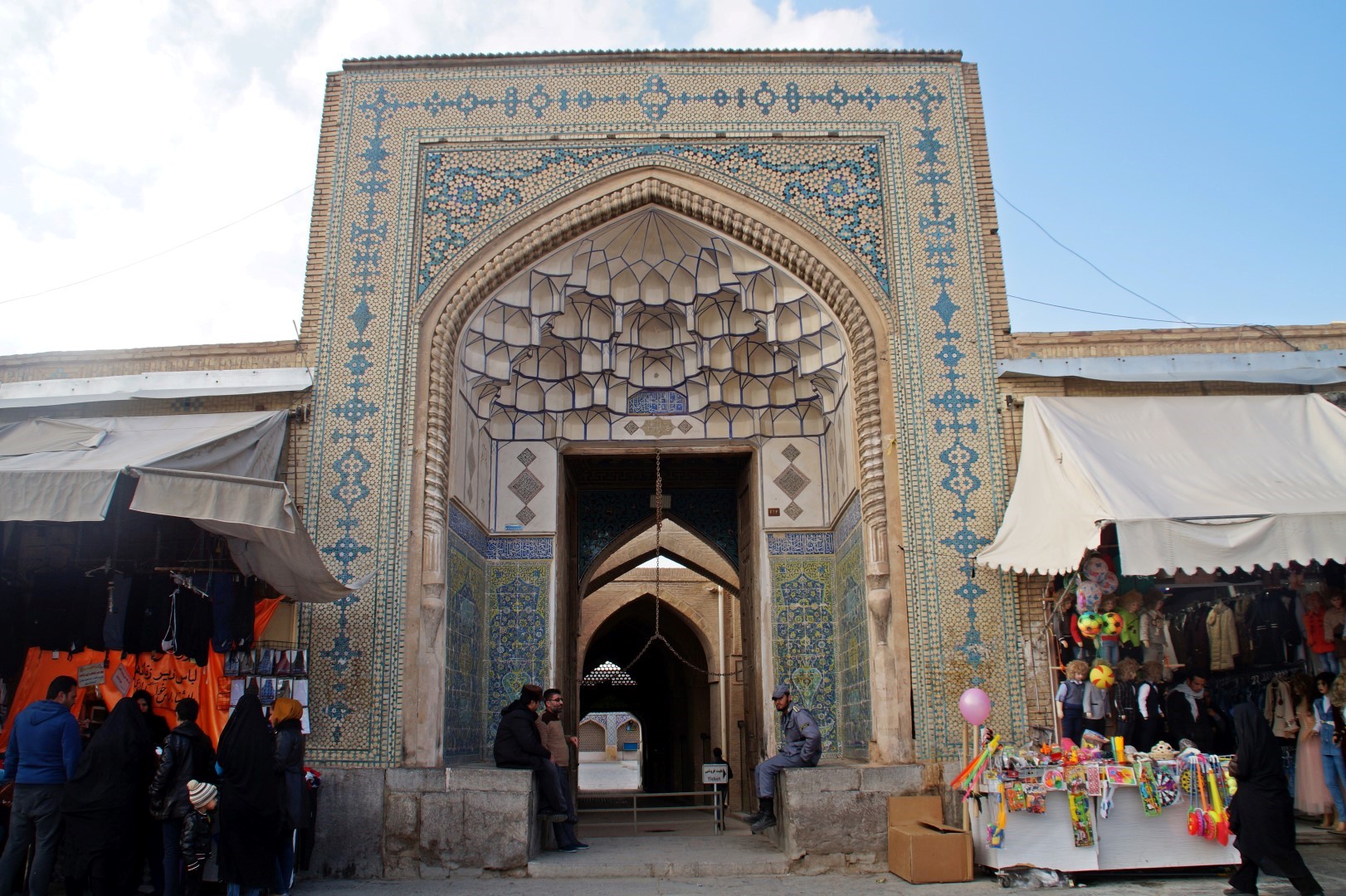
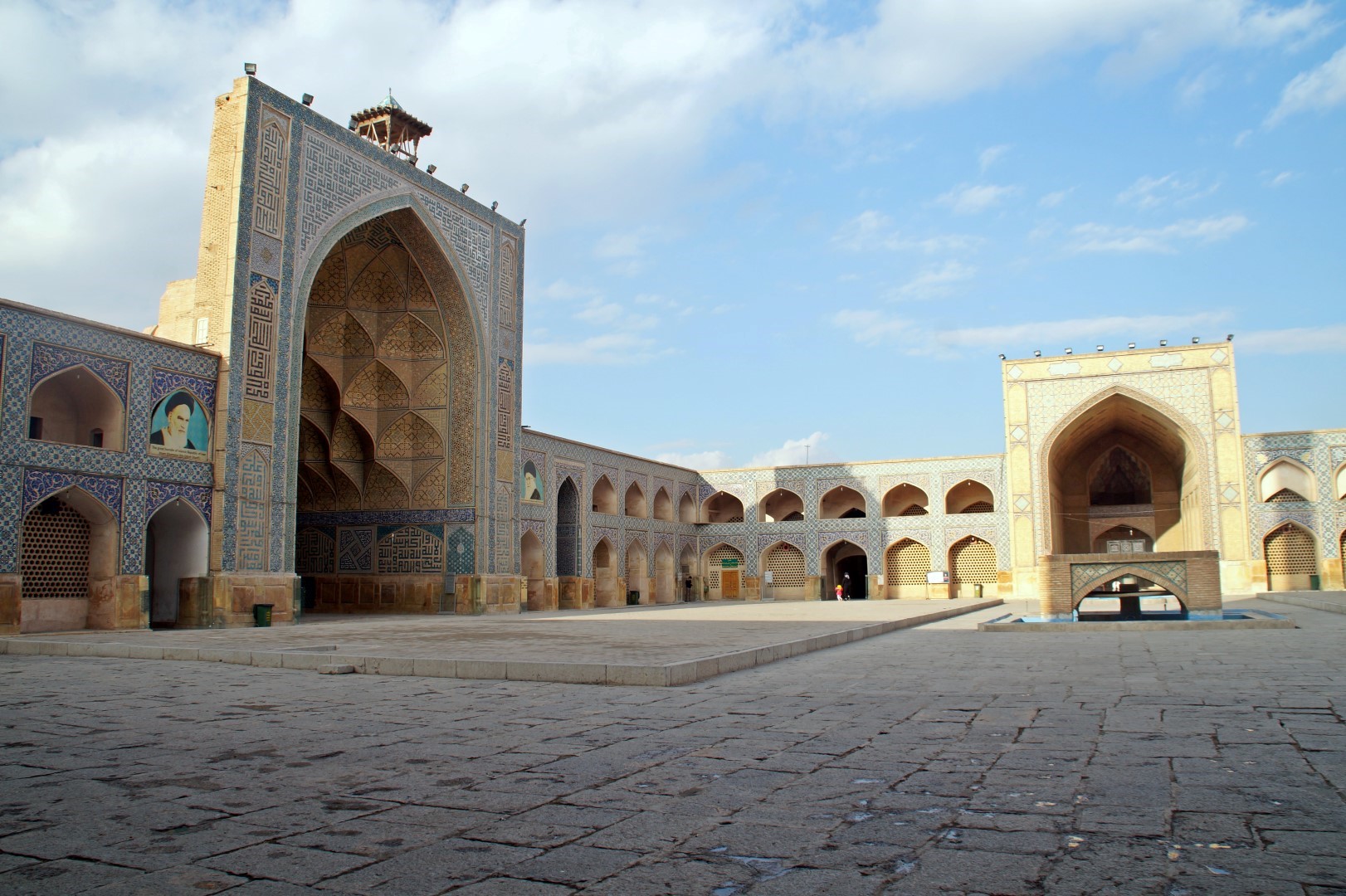
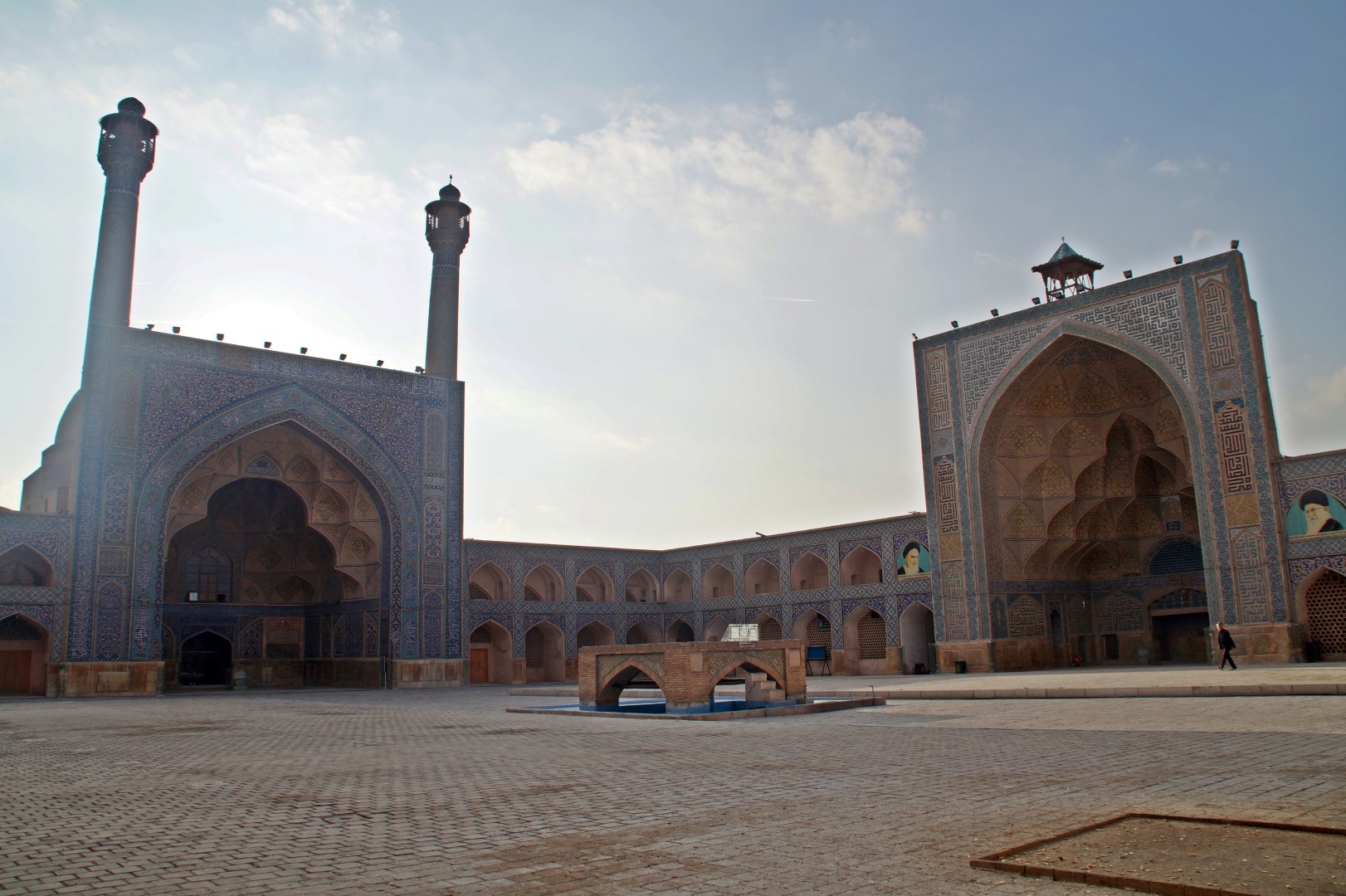
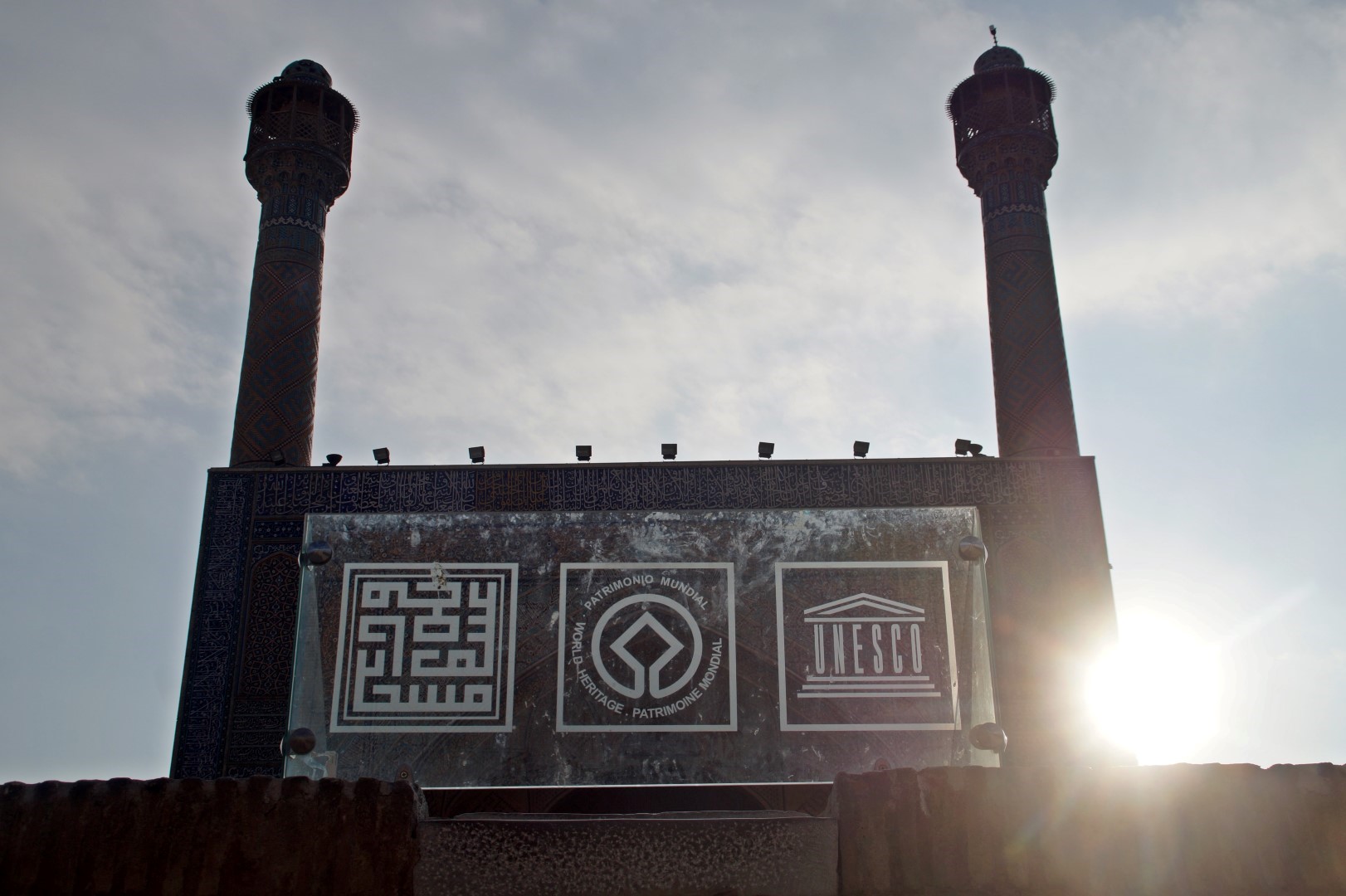
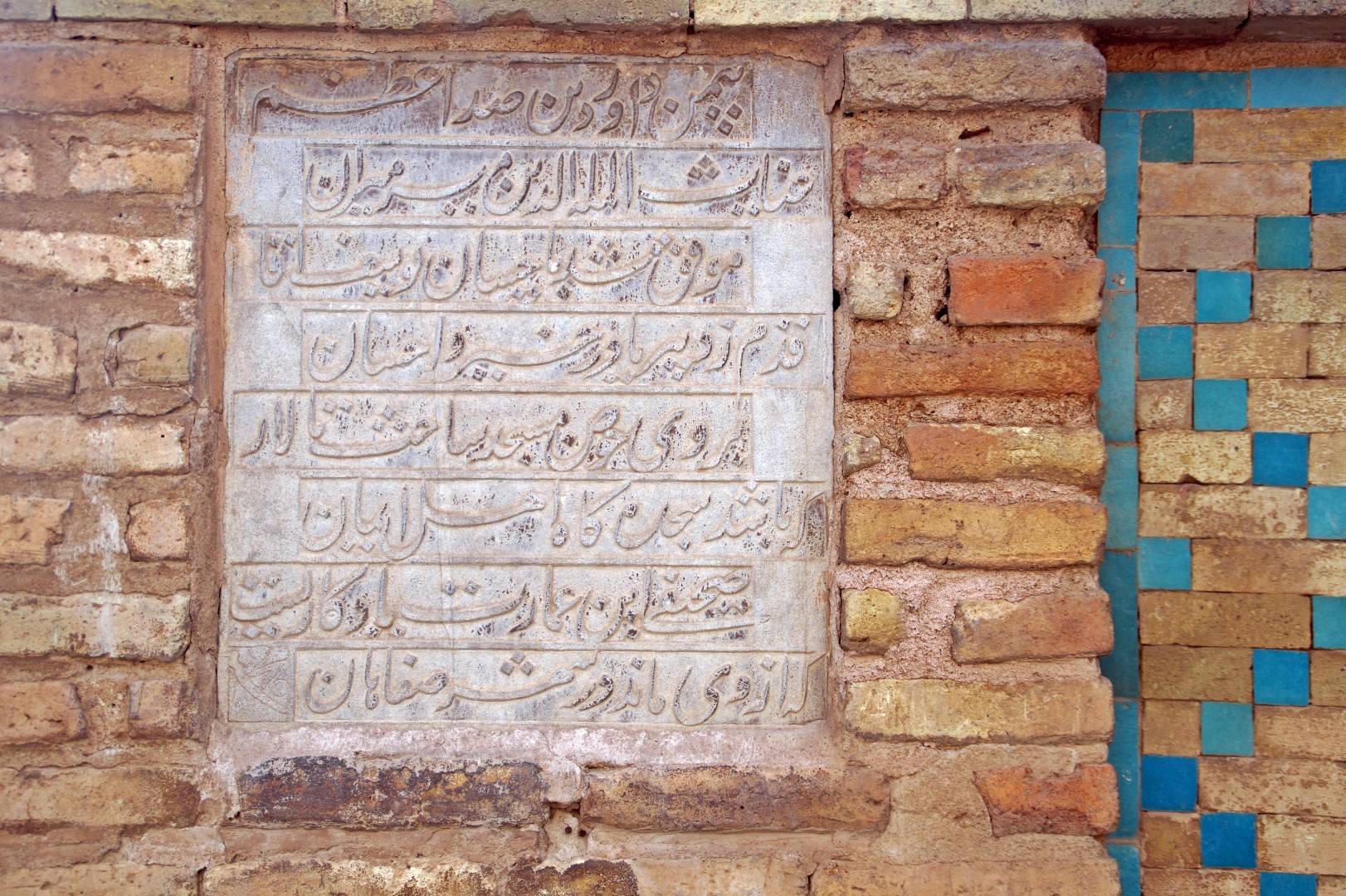
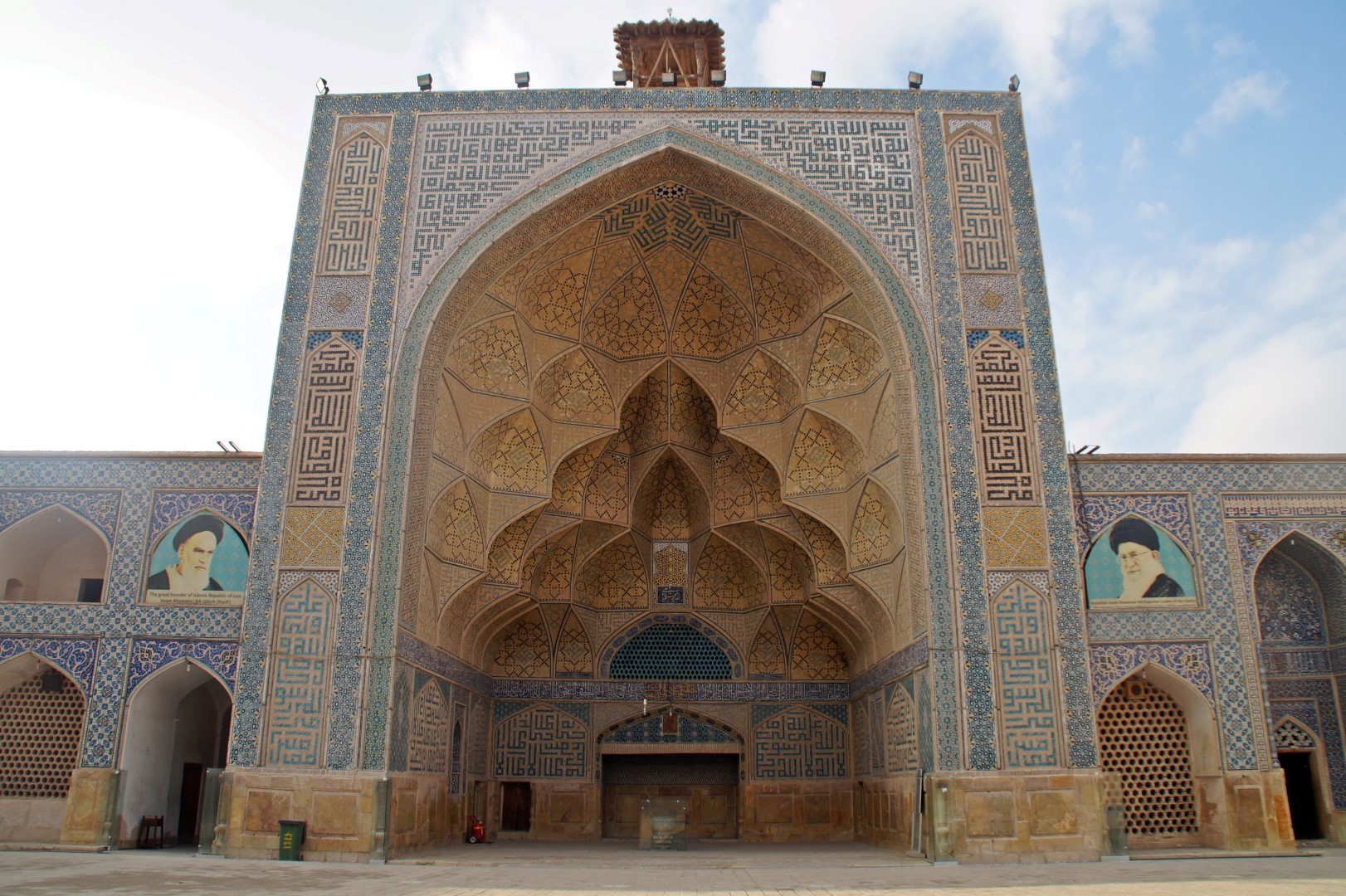
Before going into the mosque, some local people came up to us and gave us some sort of sweet vegetable soup, which the mosque was giving out for free. Steve liked it, but I had to force it down, as I’m really not a big fan of sweet things, haha. The thought was extremely nice though and I love the fact that the mosque gives out food for free for everyone.
When we were walking from the mosque back to the hostel, we met the cutest little girl, who kept shouting “hello, goodbye” to us! She was so adorable and I was really impressed with her English considering her young age!
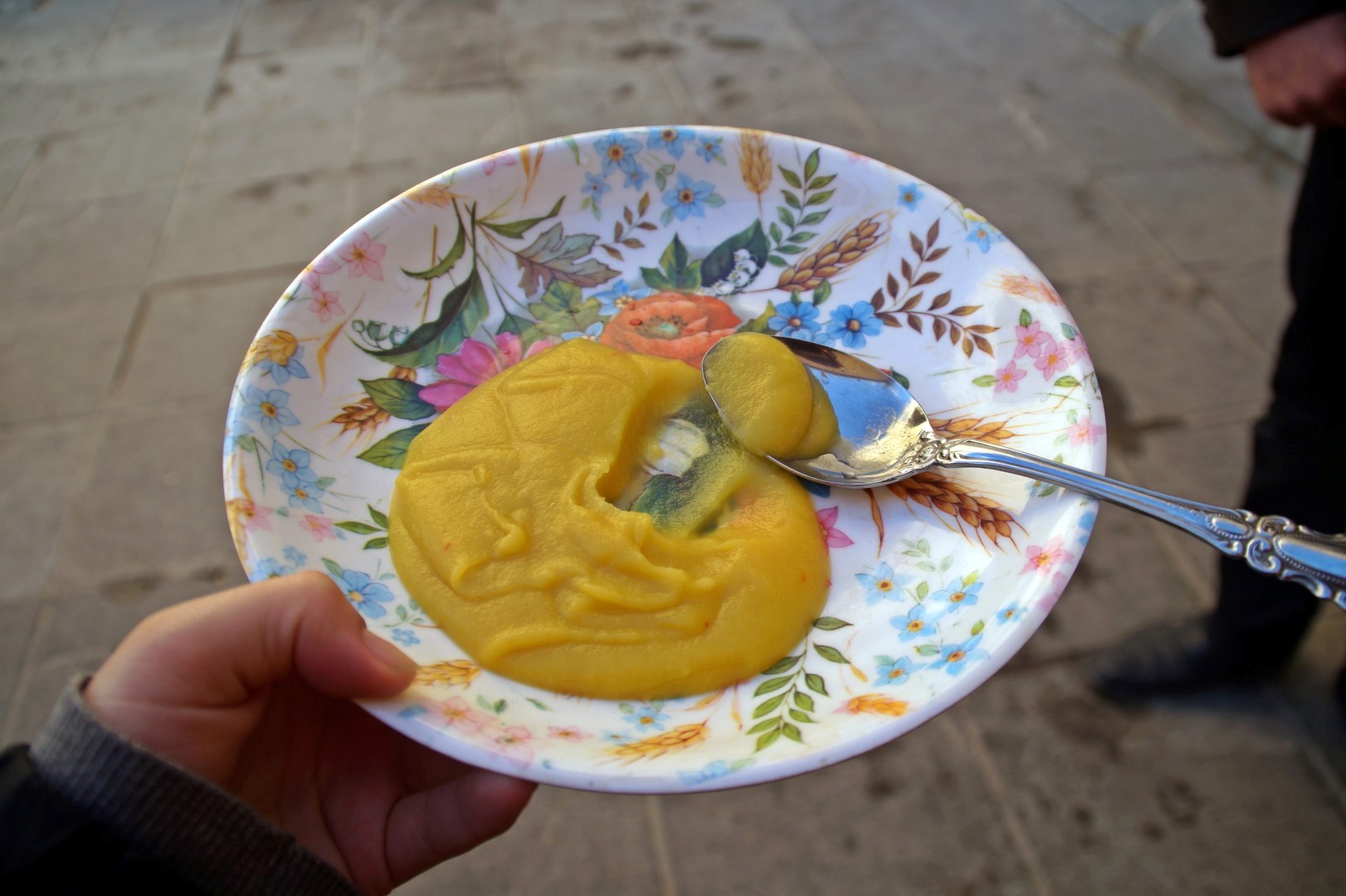
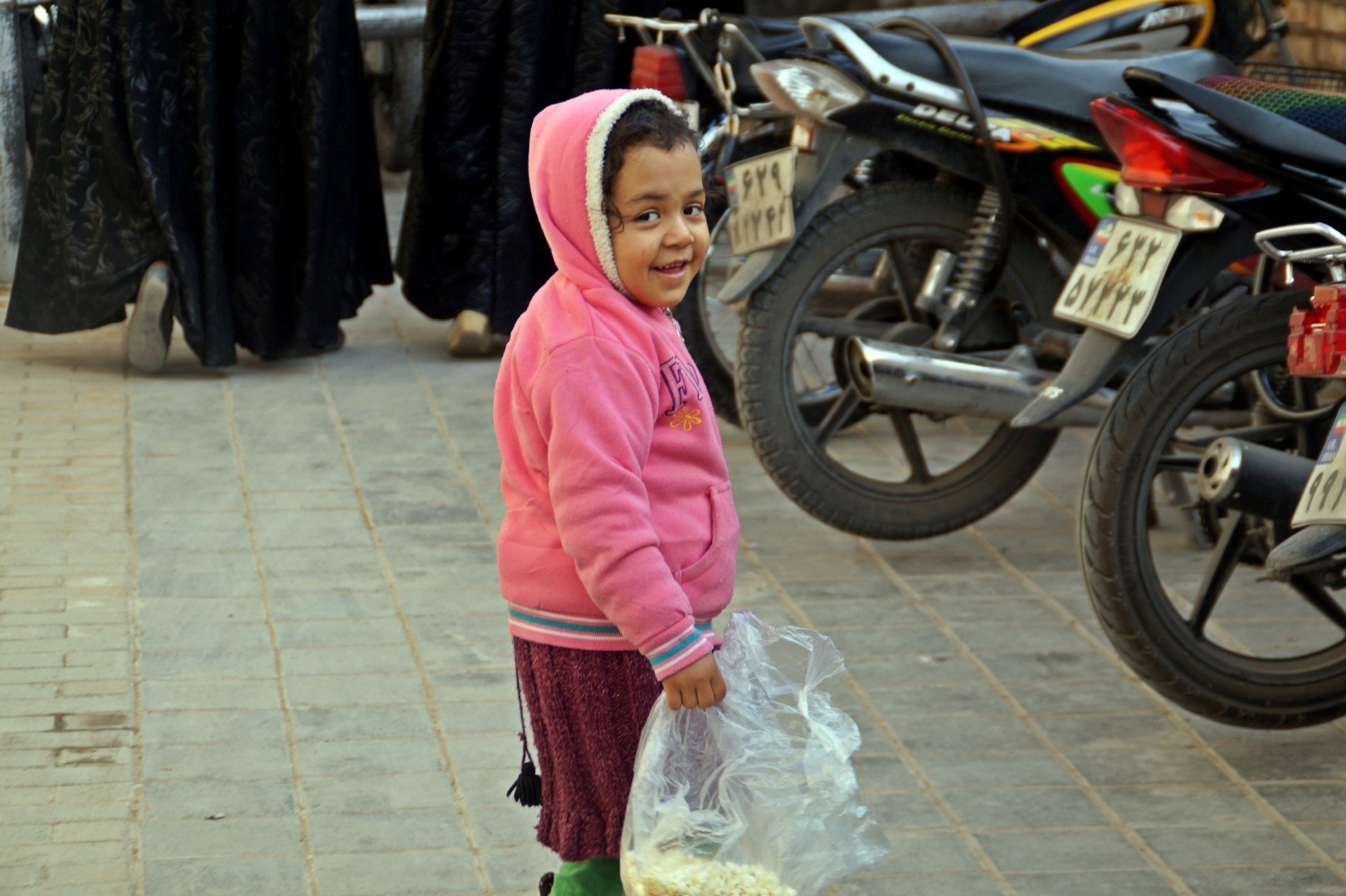
In Esfahan, many people came up to us to talk throughout the day. We got several “welcome to Esfahan!” from passerbys, but quite a few stopped to ask us where we were from, what we were doing in Iran and how we liked Esfahan. Iranian people are very friendly and welcoming, and it’s clear to me that they are very proud of their country. And especially the people of Esfahan seem to be proud of their ancient city. We met a local guy at the bus station, while waiting for a bus to Yazd in the evening, who talked about how much better Esfahan is than Tehran. I agree, although I wouldn’t choose Esfahan as my place to settle down in Iran. Esfahan was a nice experience, but the dried out river, the big size of the city and the Tehran-like traffic made me like it less than I thought I would.
Esfahan is considered by many to be one of the most beautiful cities in the world, and Iranians call the city “Nesf-e-Jahan” meaning “Half the World”, but unfortunately, I had a hard time finding a reason to agree. I would choose the less popular city of Kashan any day!
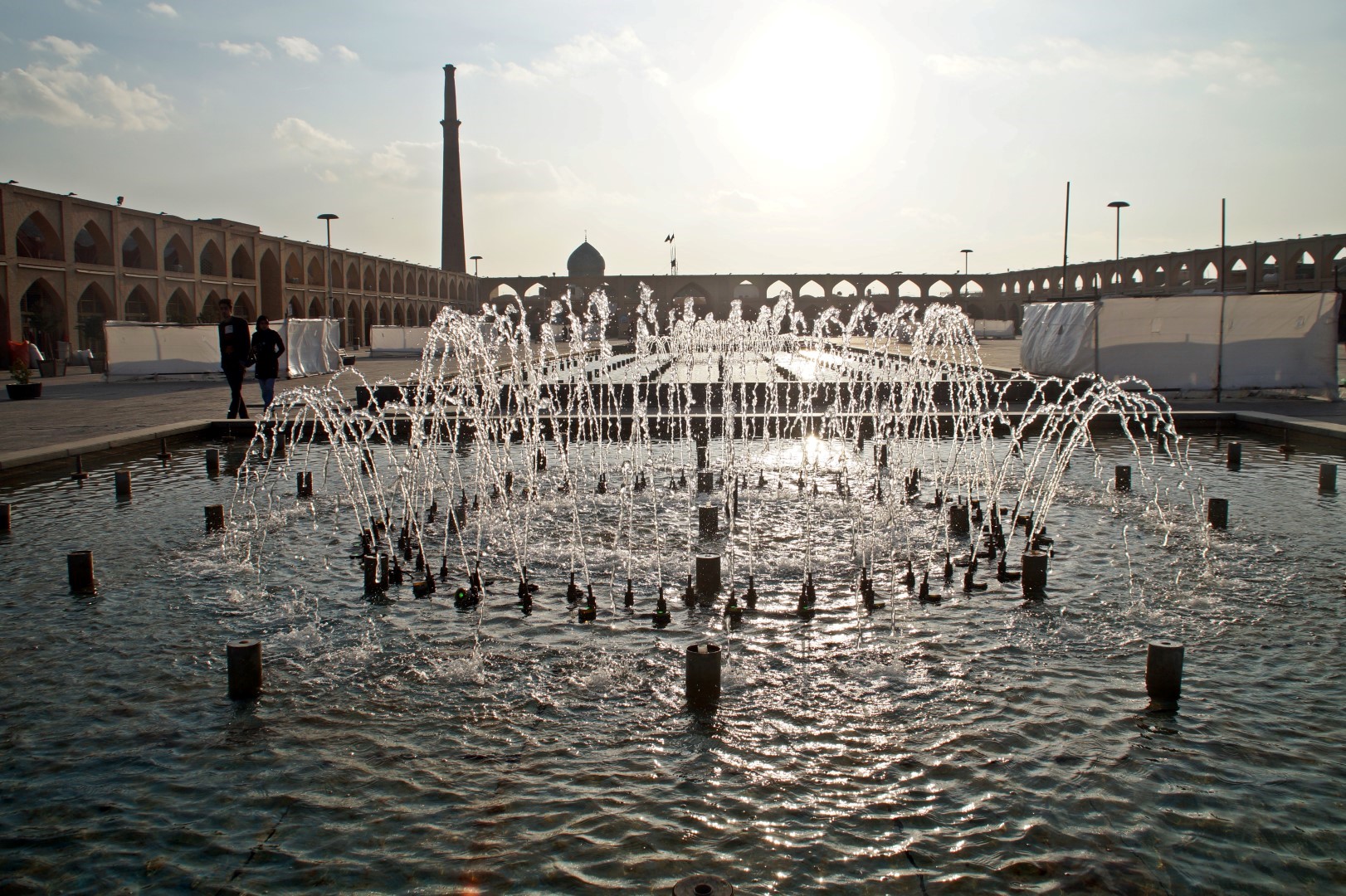
Travelling to Esfahan
- The bus from Kashan to Esfahan is easy to take, just ask your hostel which bus terminal to go to and walk there or take a taxi or bus. The bus ticket costs 175,000 rial (5½ USD) and it’s a very comfortable ride with wide seats and snacks and juice provided – at least on the bus that we got! The bus leaves approximately every hour.
- You’ll be dropped off at the Kaveh Passenger Terminal, from where you can catch a bus (ask around and the locals will help!) or a taxi to your accommodation. We paid 80,000 rial (2½ USD) to go to our hostel, which was 6 minutes away.
- We stayed at Amir Kabir Hostel, which cost 10 USD each for a mixed dorm, including breakfast. There is no toilet paper in the bathrooms, but they have it at the reception, so you could ask for it there or bring your own. From my experience, the showers at the hostel are cold. Wifi in the hostel is pretty good and fast.
- Choose what you want to see before you go, as everything in Esfahan has an entrance fee, and they’re not cheap. The entrance fees range from 200,000 to 300,000 rial (6-9 USD).
Off to Esfahan? Download a city guide for Esfahan with GPSmyCity here!

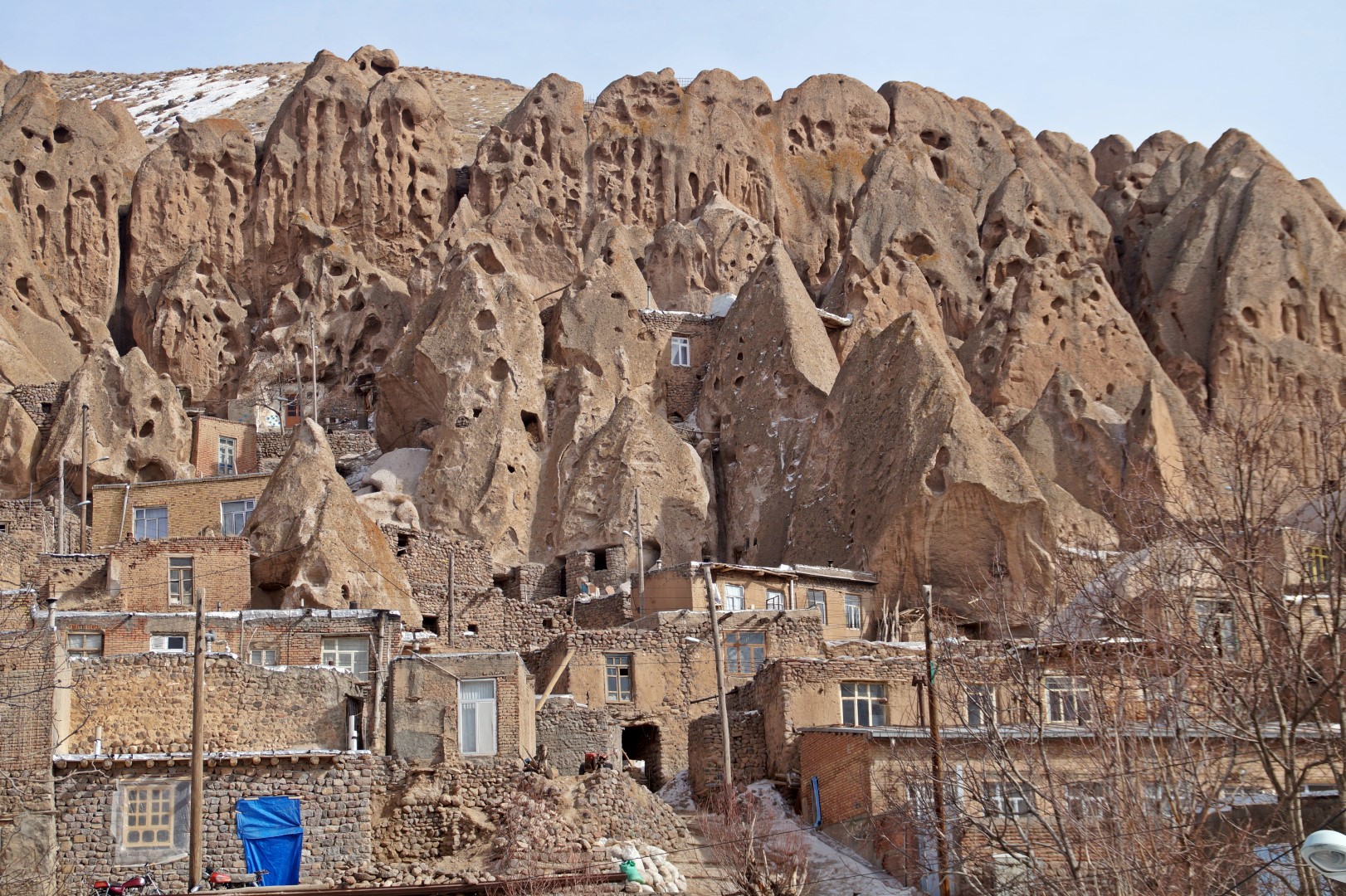
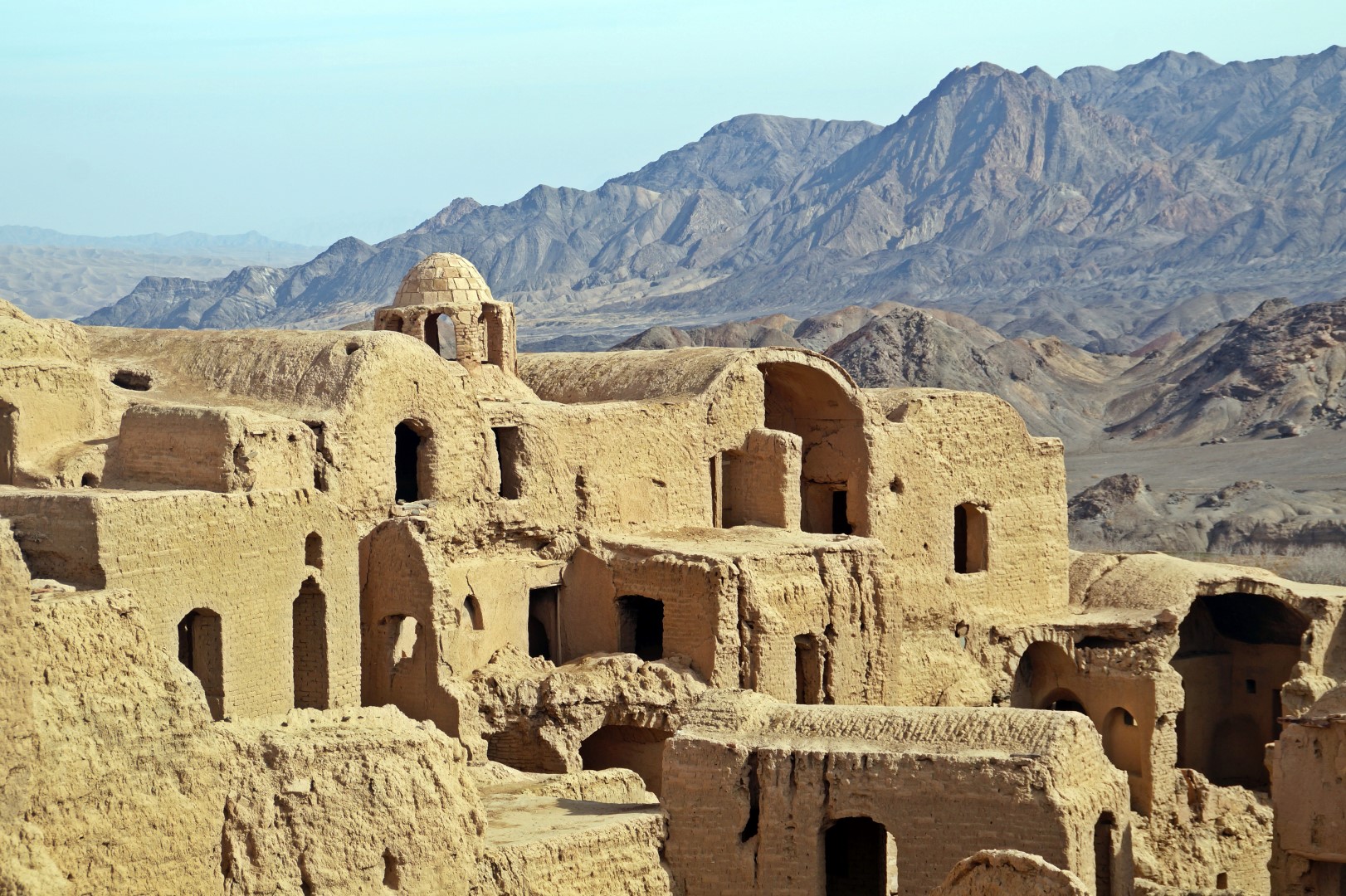

2 COMMENTS
Ann
7 years agoWell, yes, big cities has its own drawbacks. This one is very beautiful and colorful. It suits the country and offers many attractions. So good that people are friendly and curious about you, it can be beneficial. I like the photos you made, they transfer the atmosphere and culture. Thank you!
Melissa Cherry
7 years agoThey certainly do, although I rarely feel like than in European cities! But although Esfahan wasn’t all that I expected it to be, it still had some good sides – especially its citizens!
Thank you Ann ?